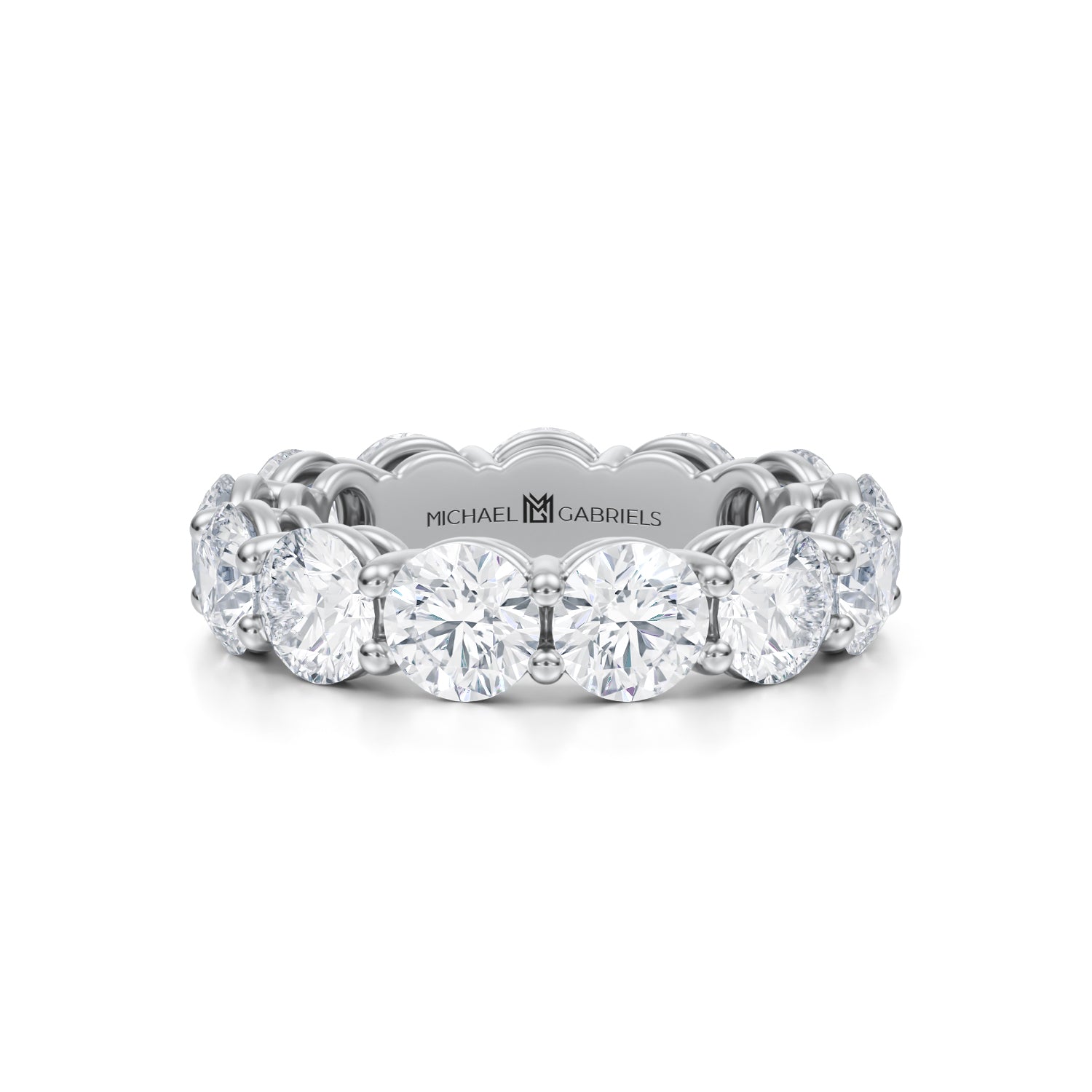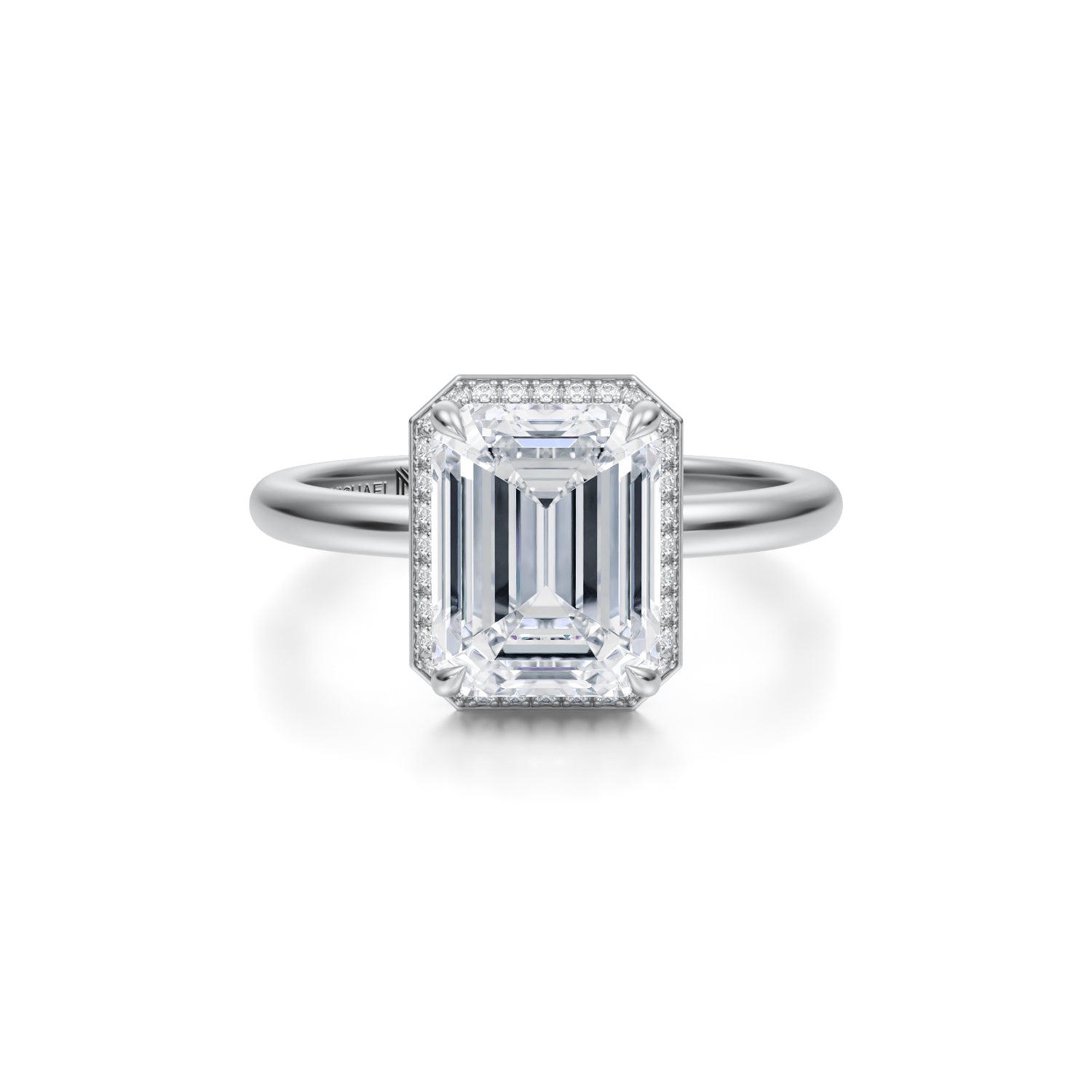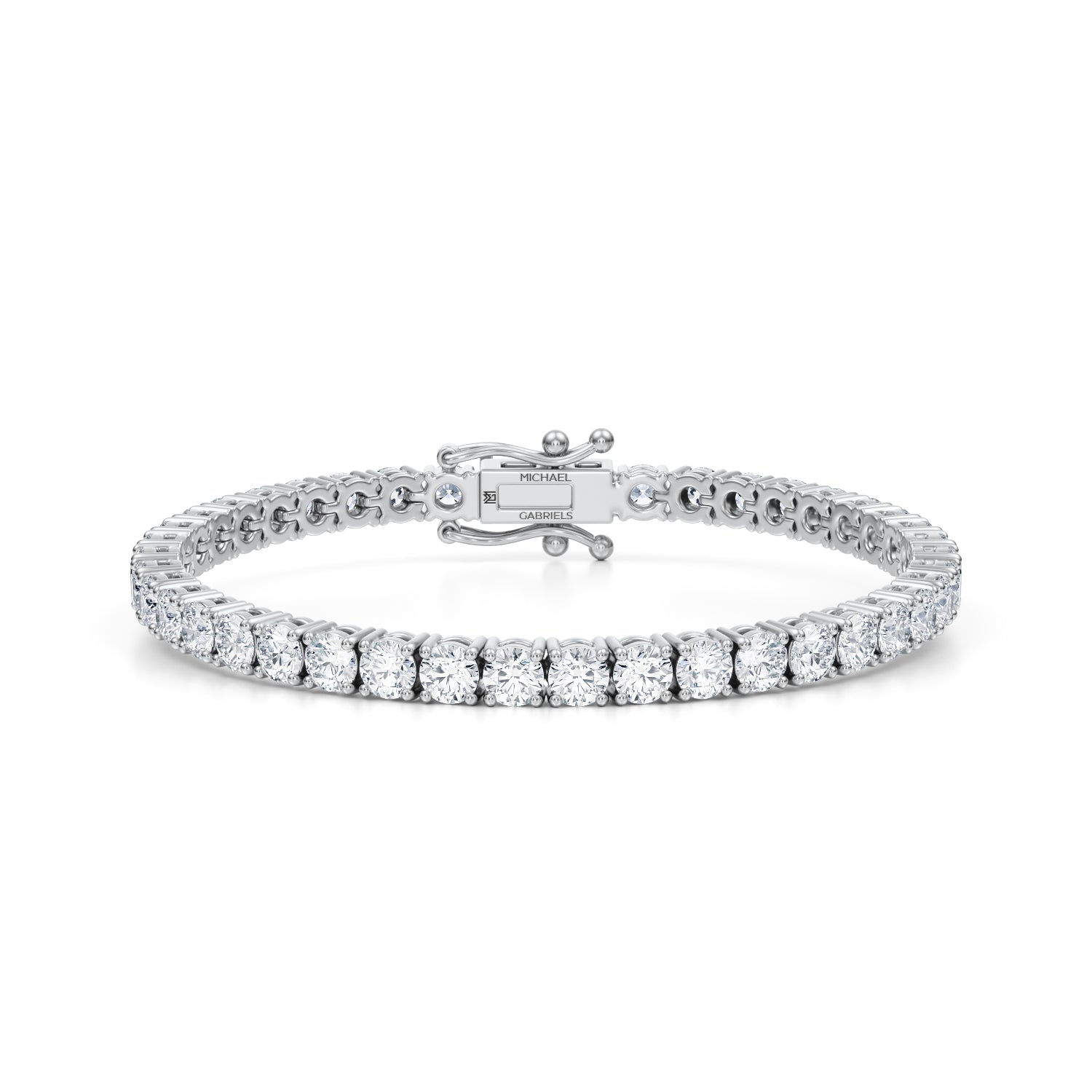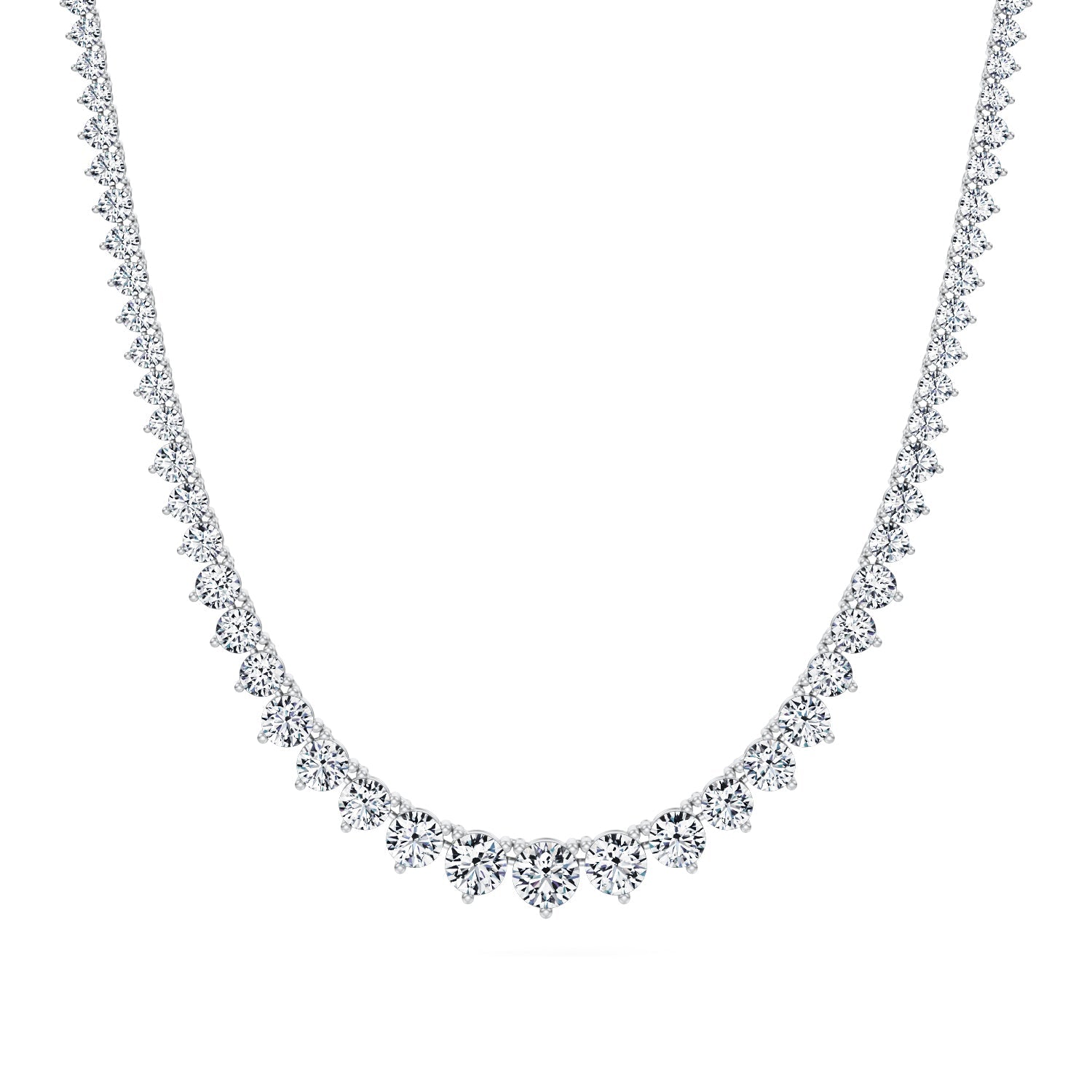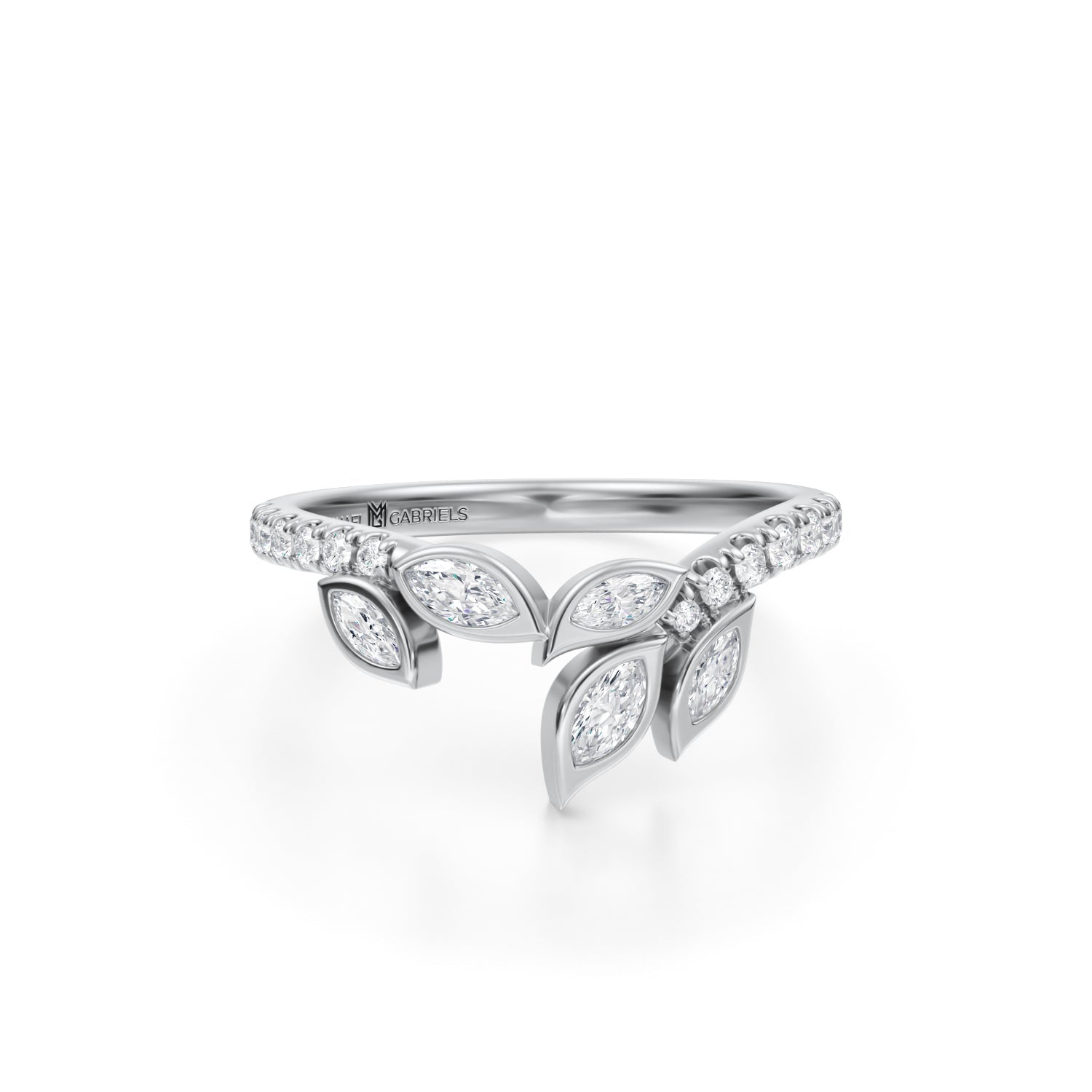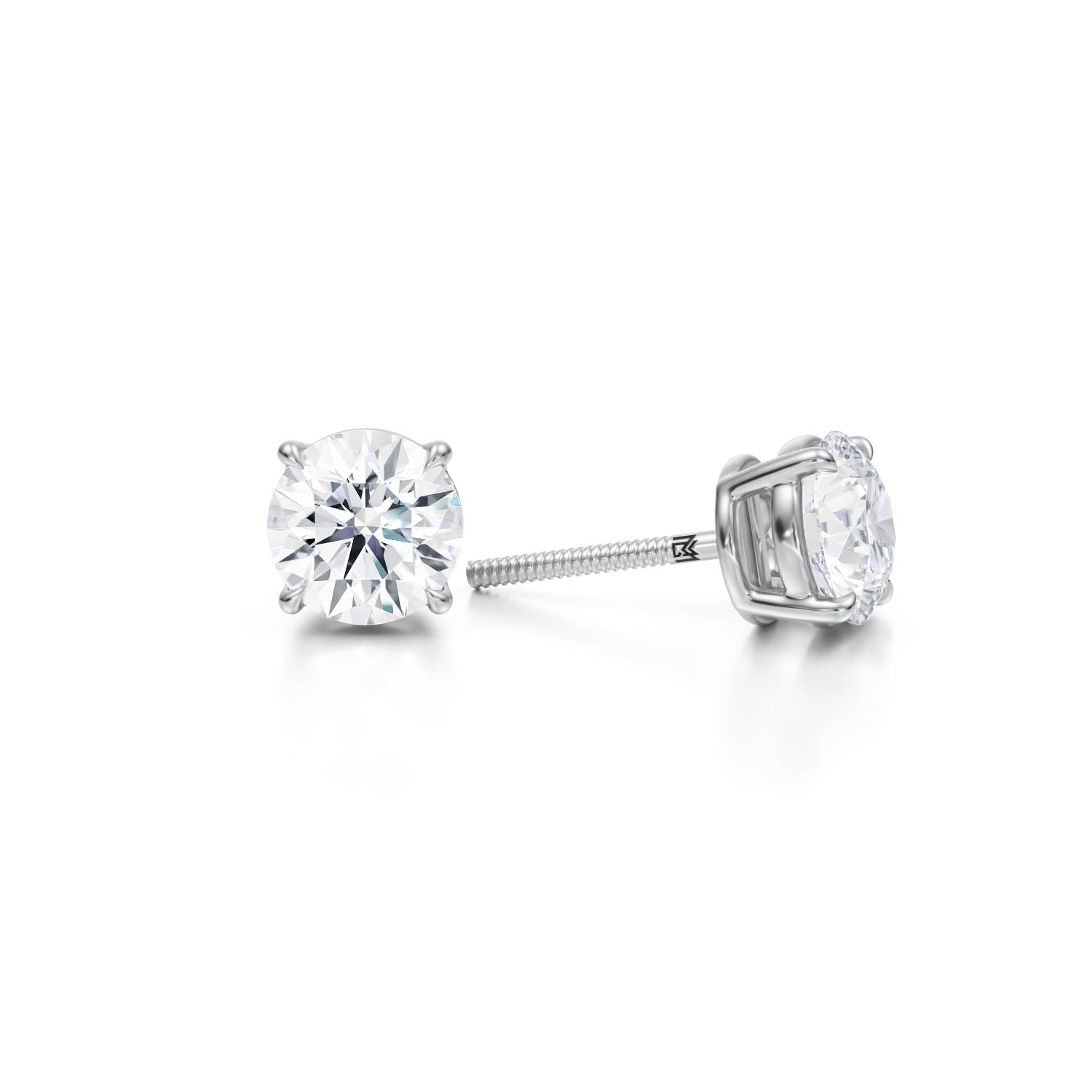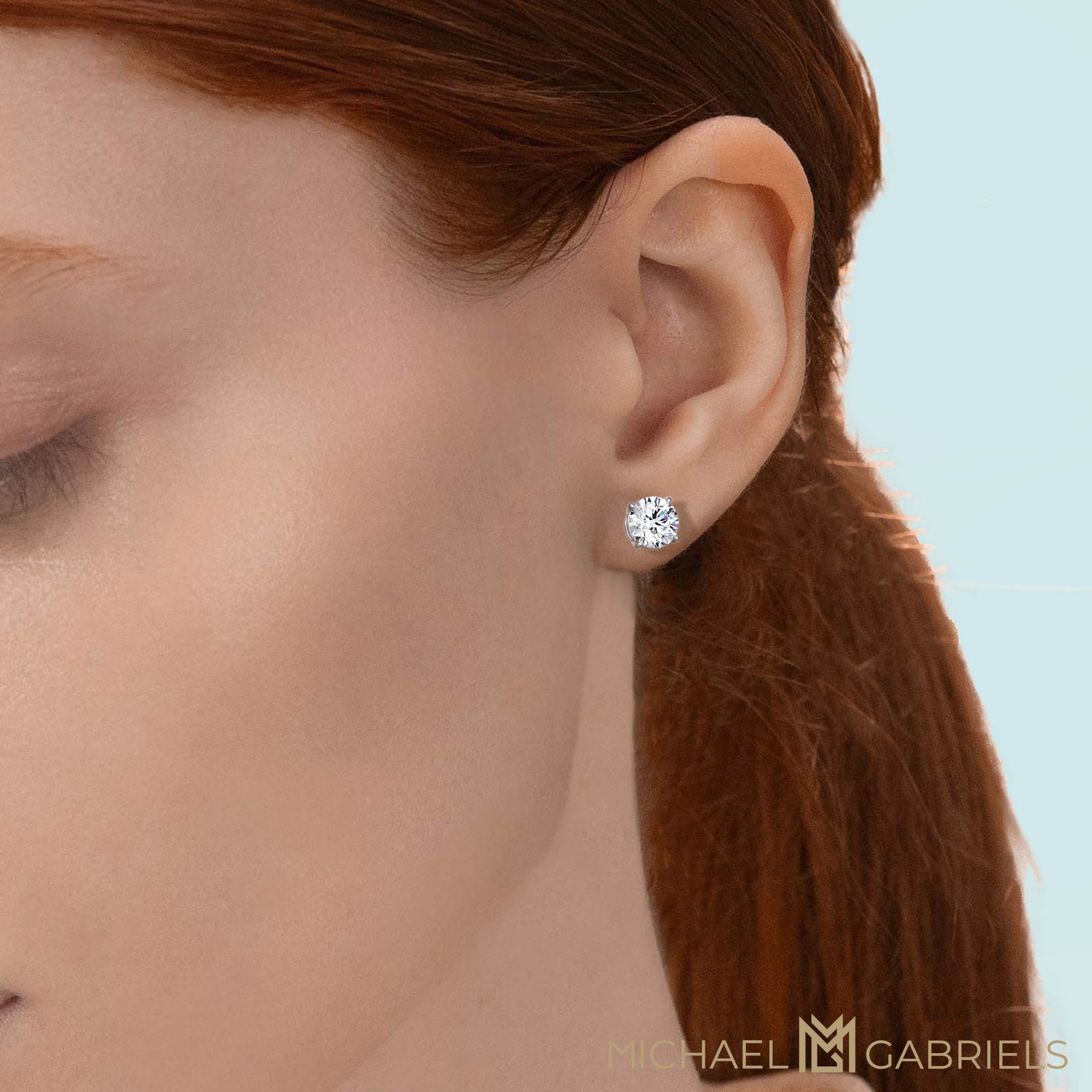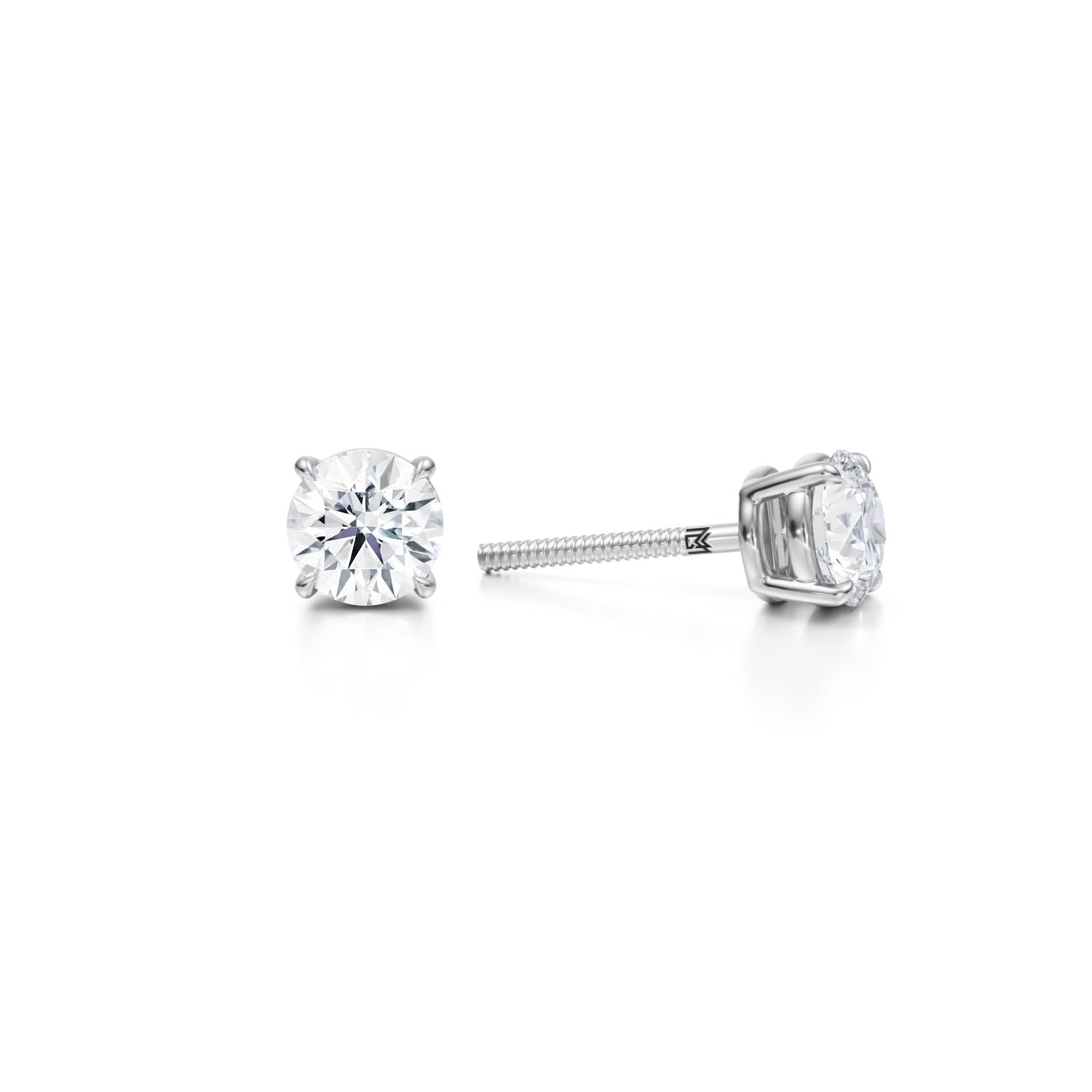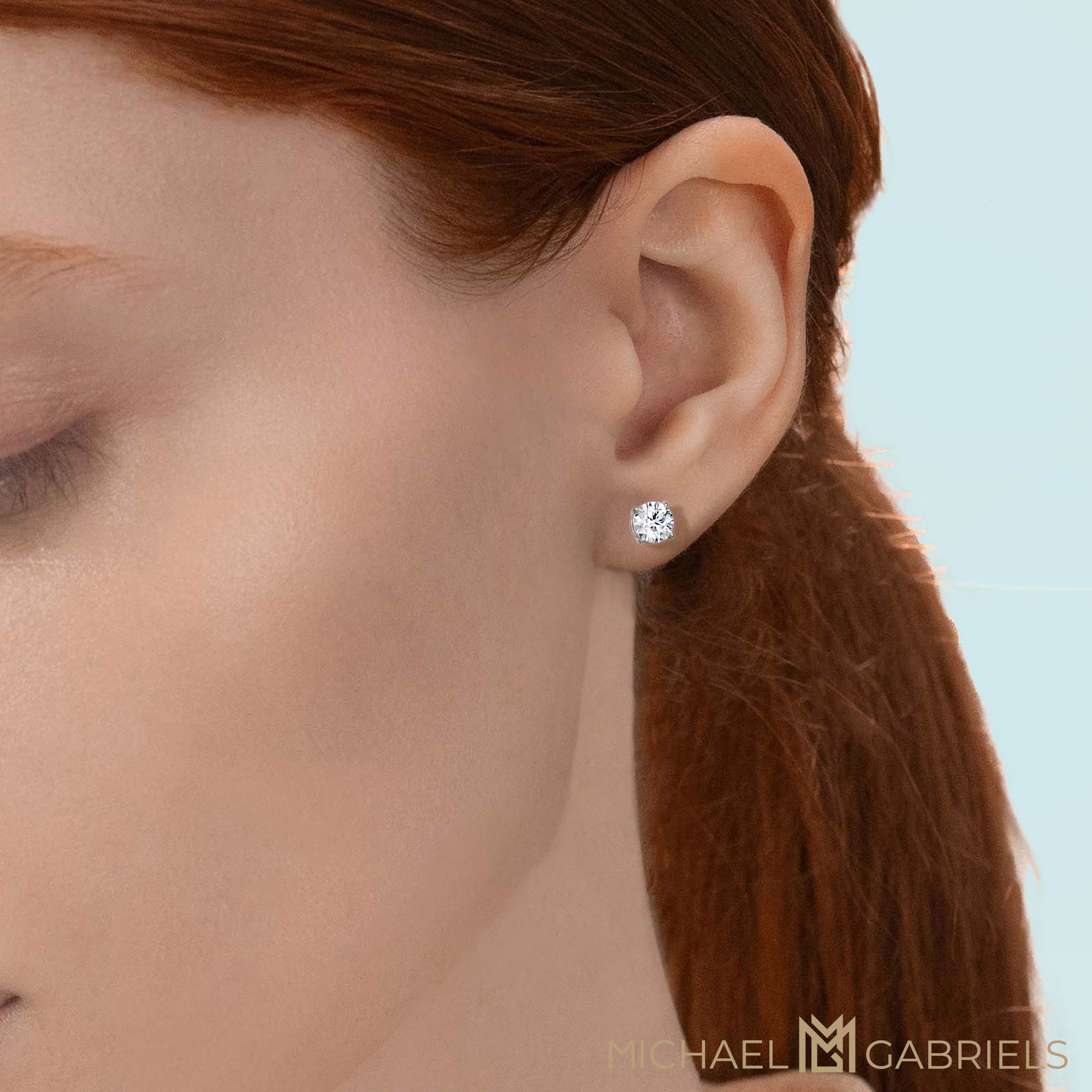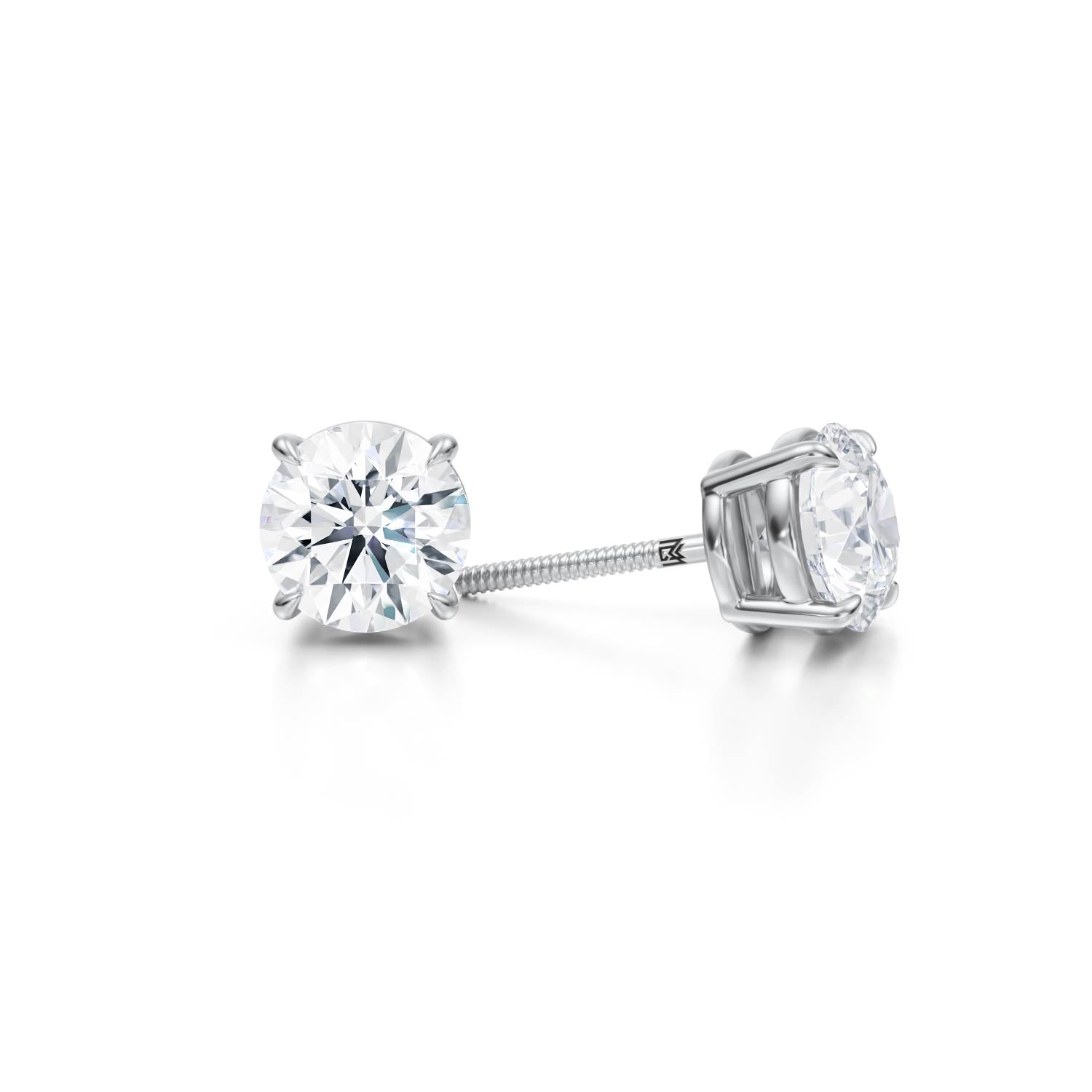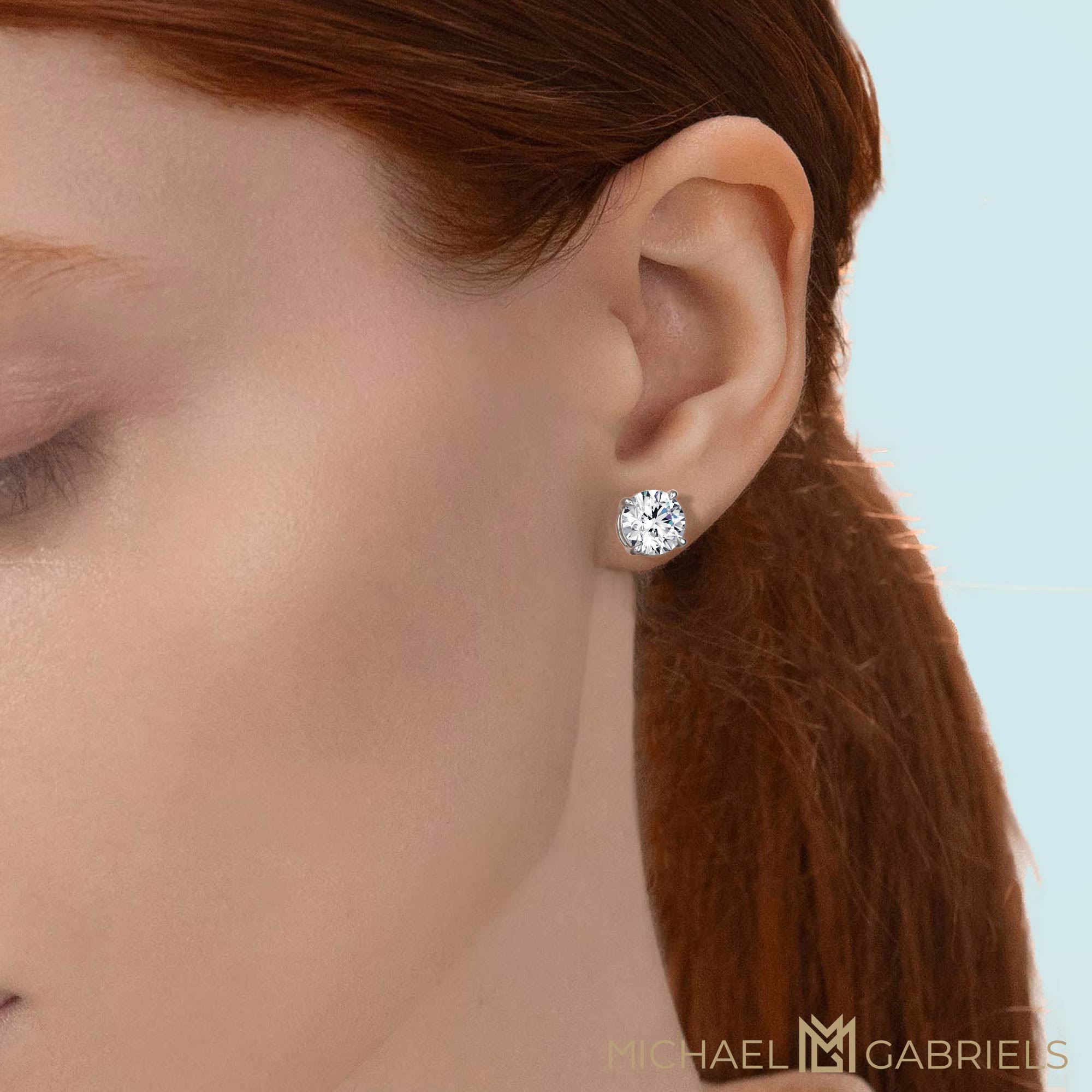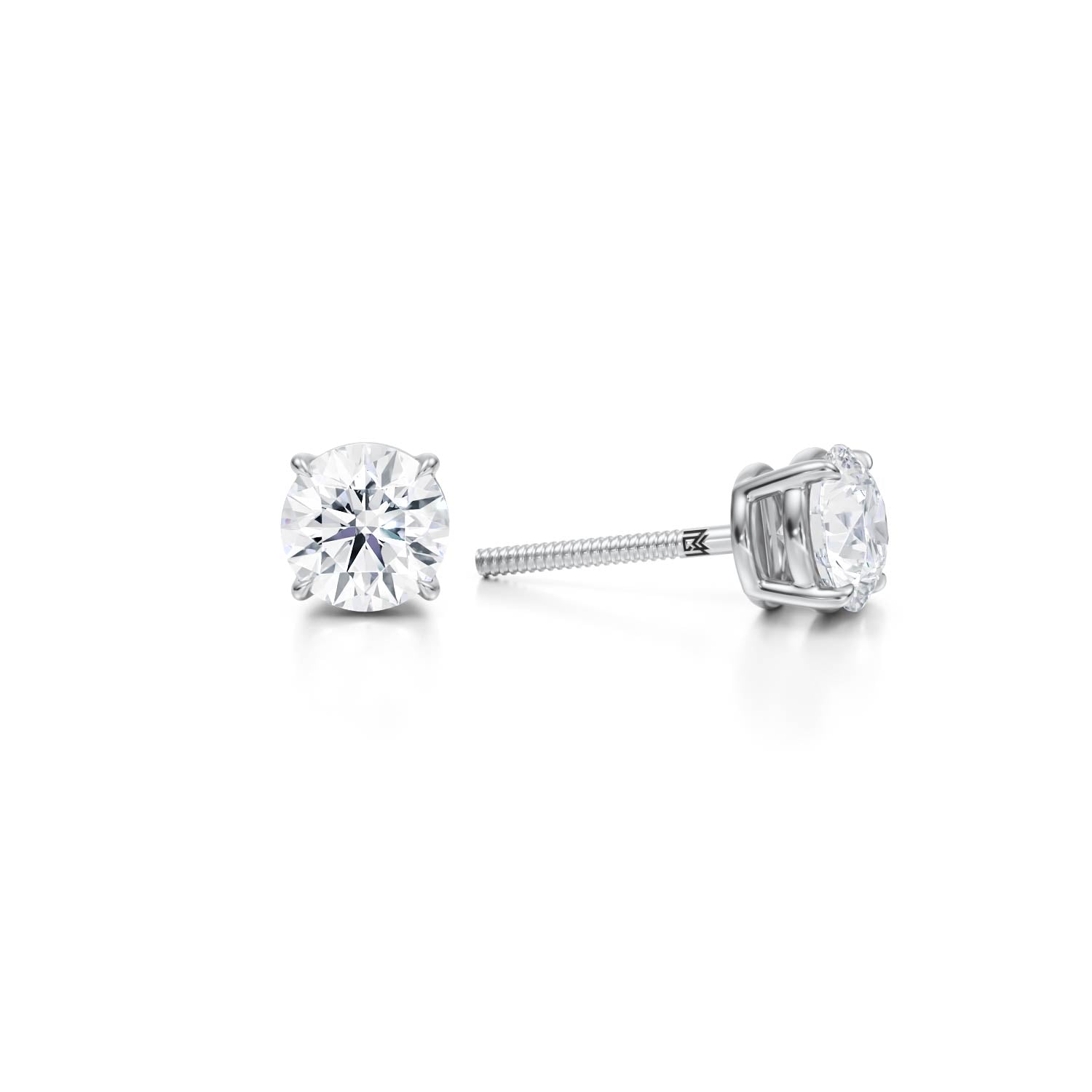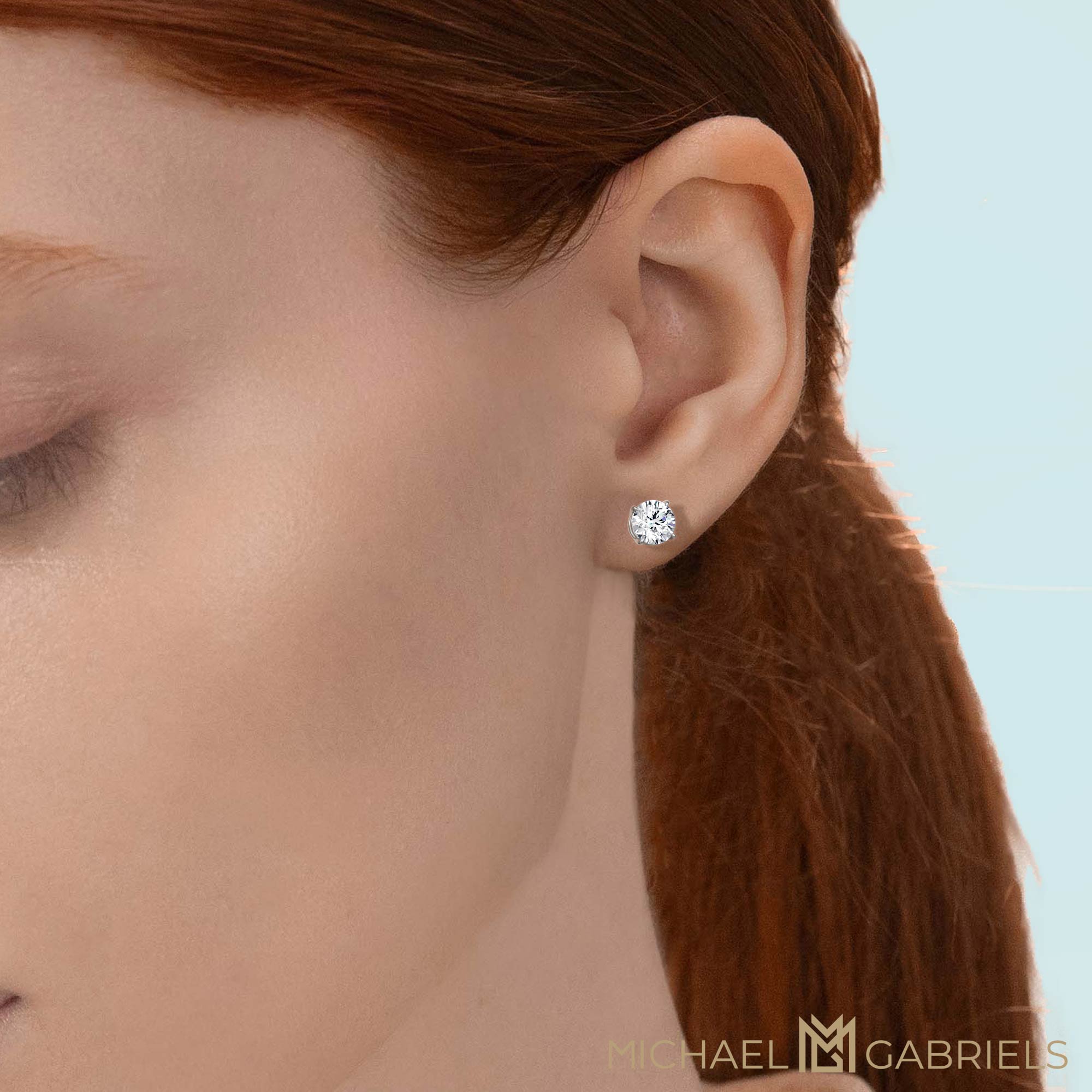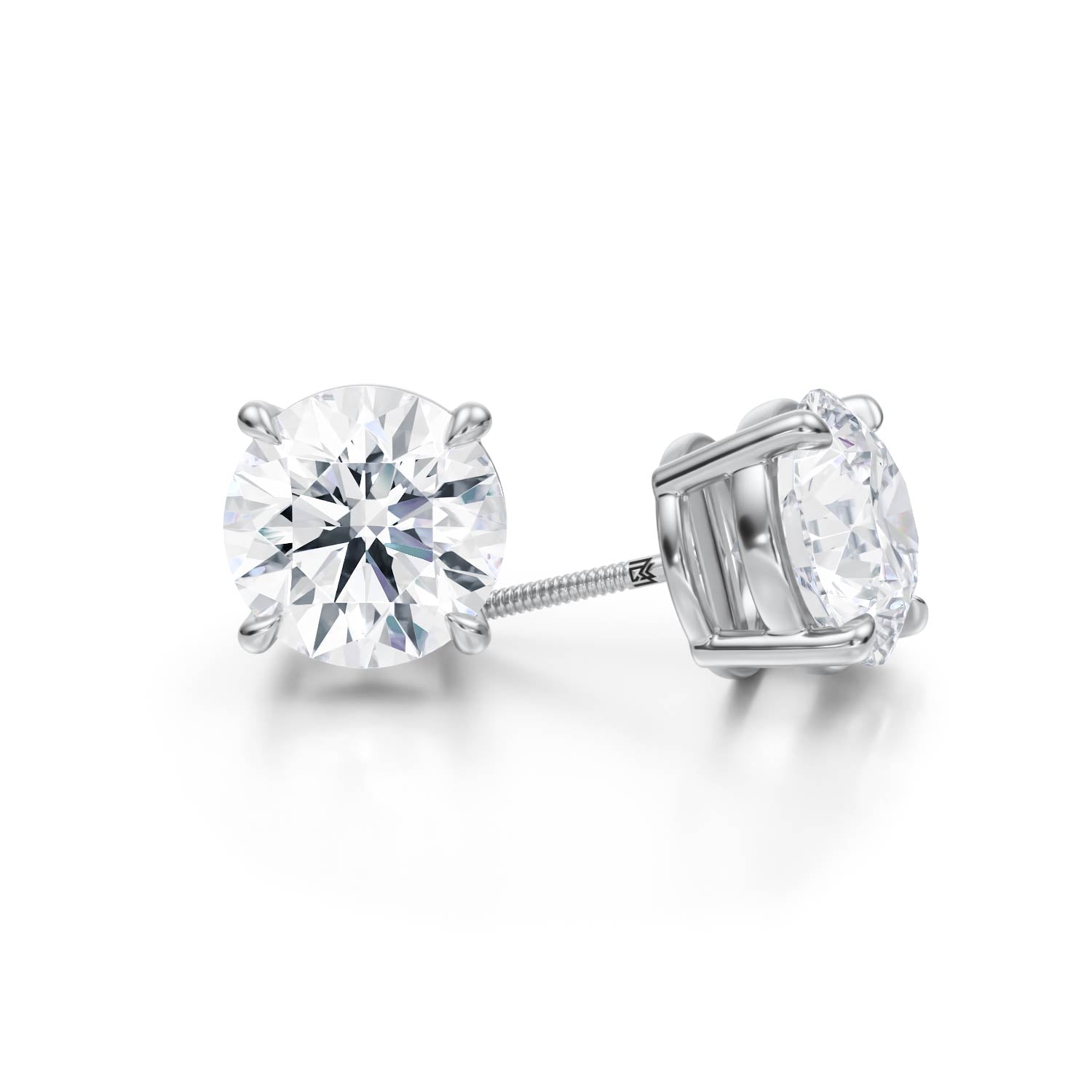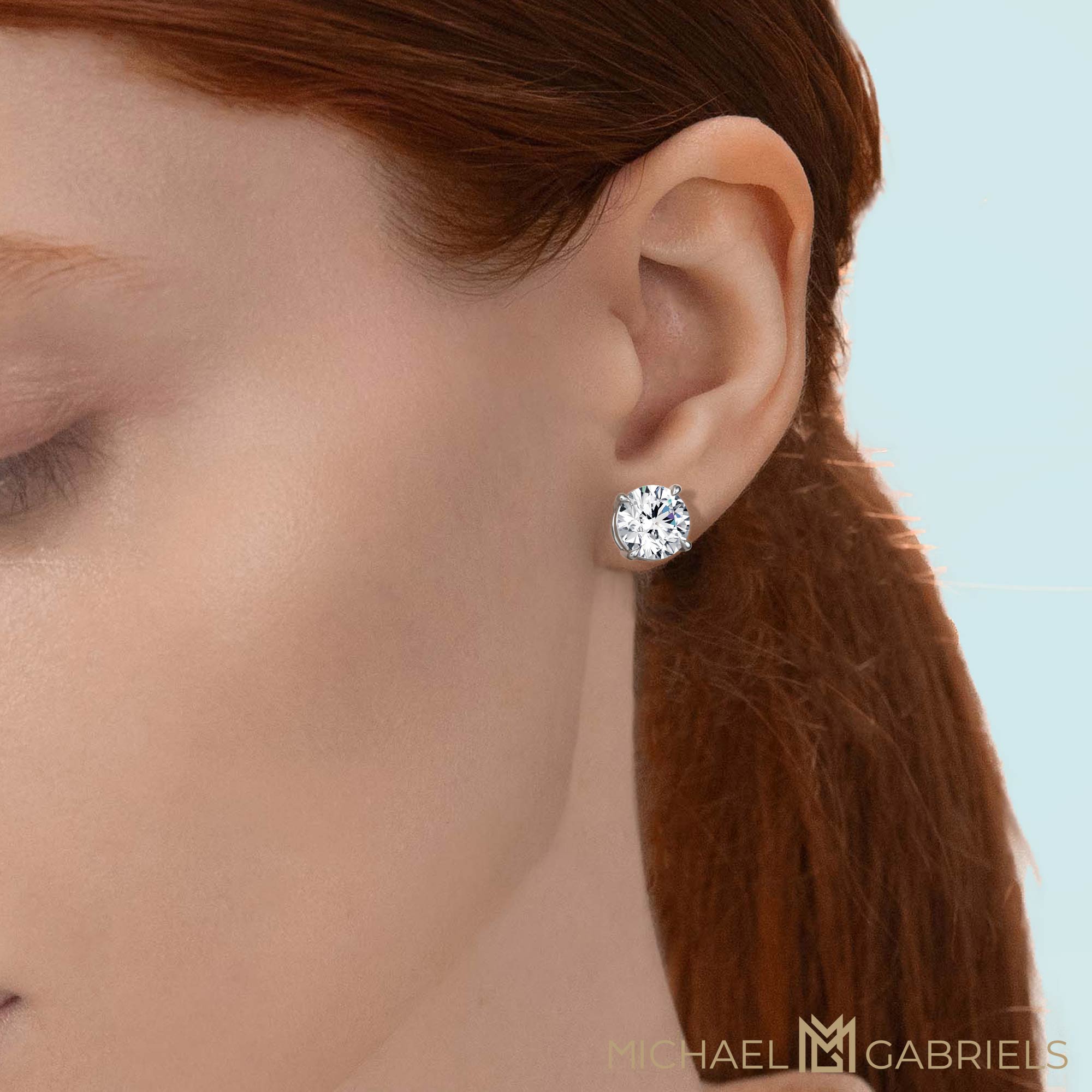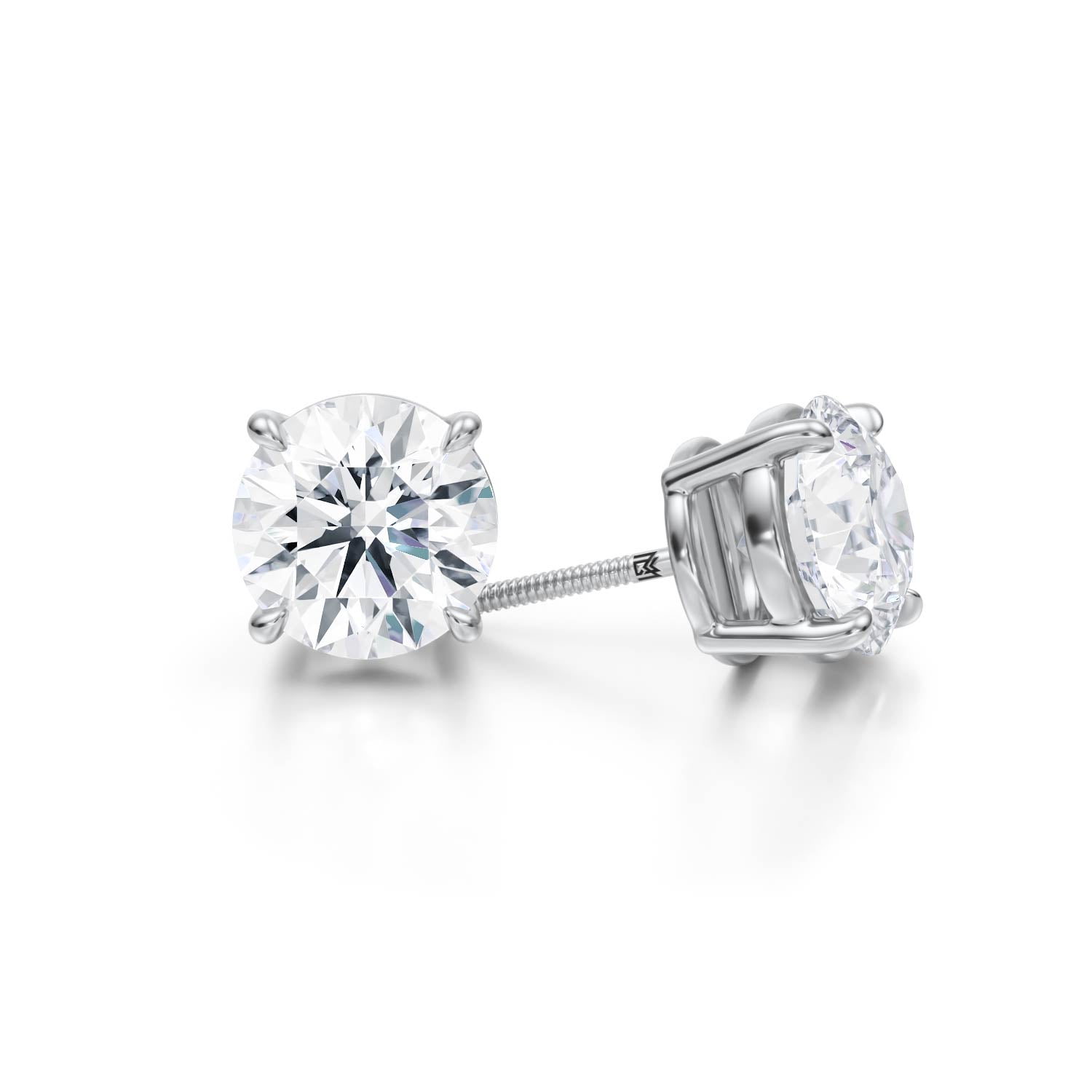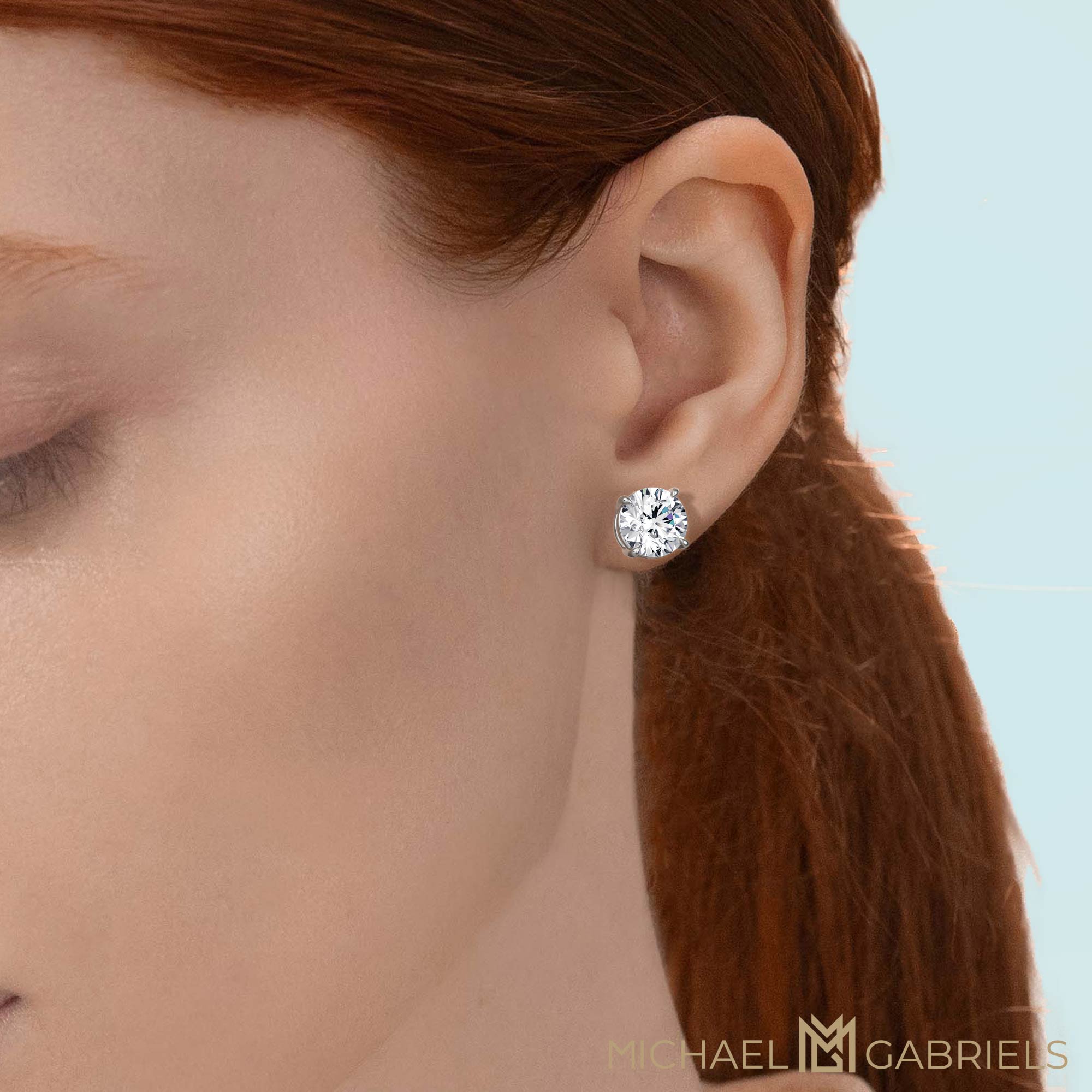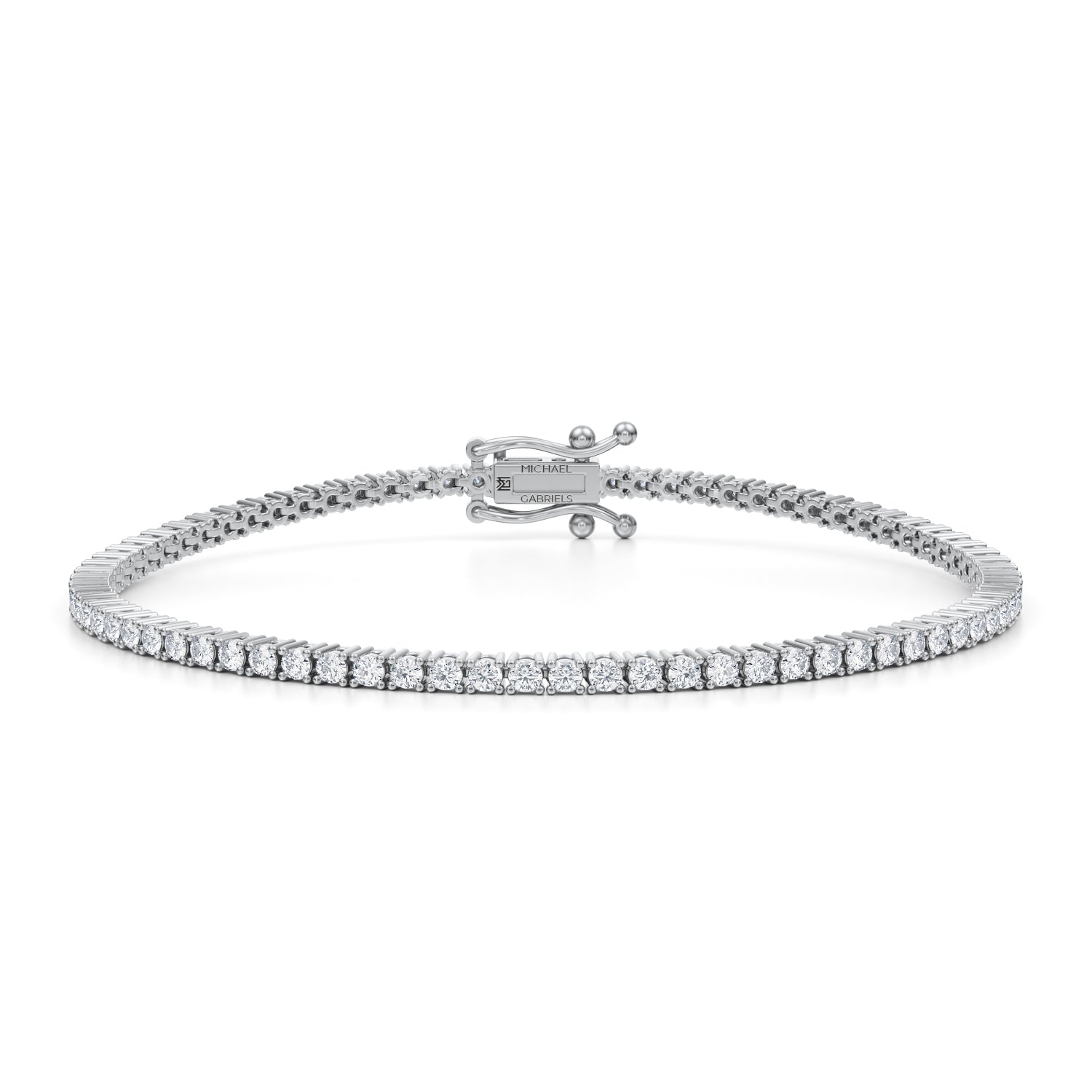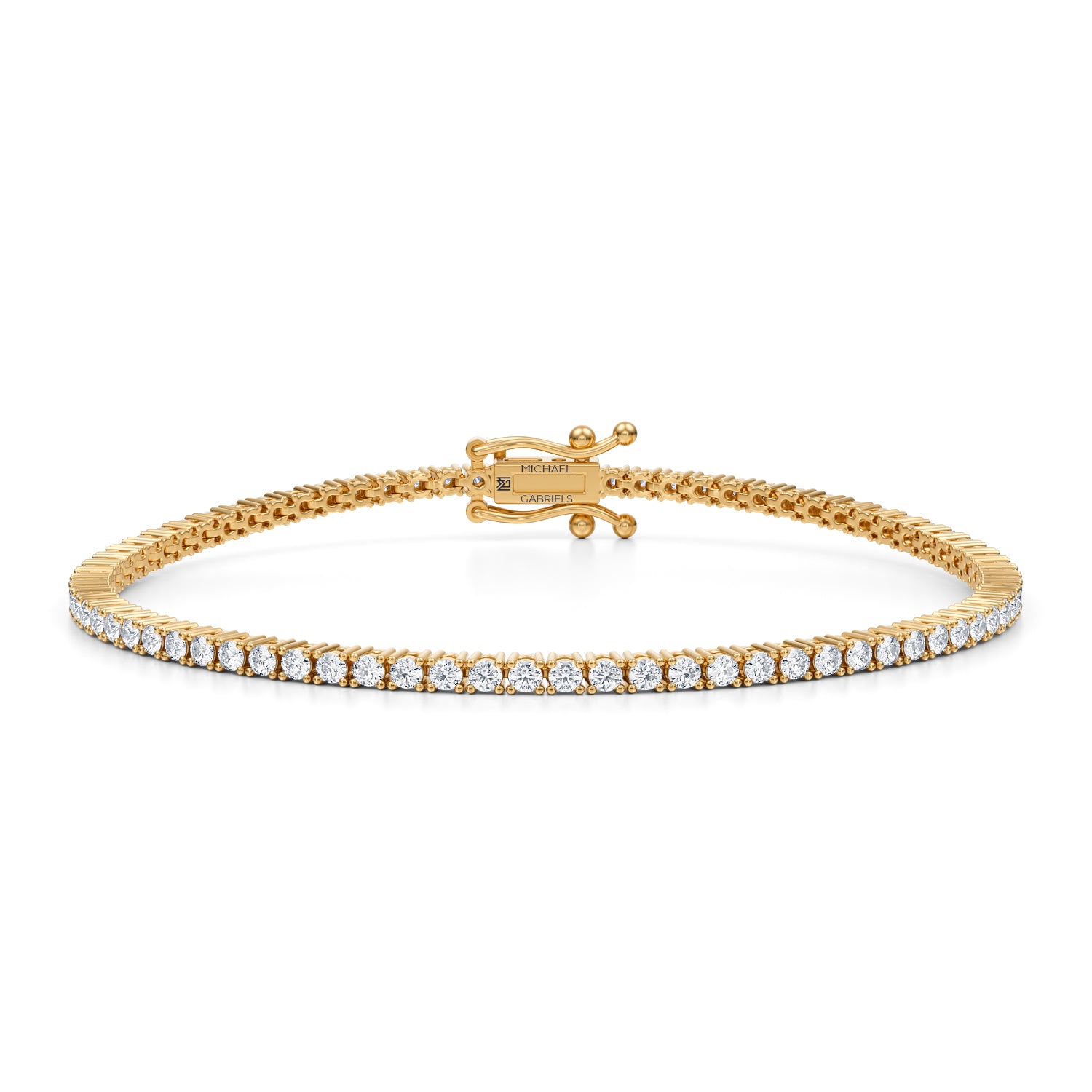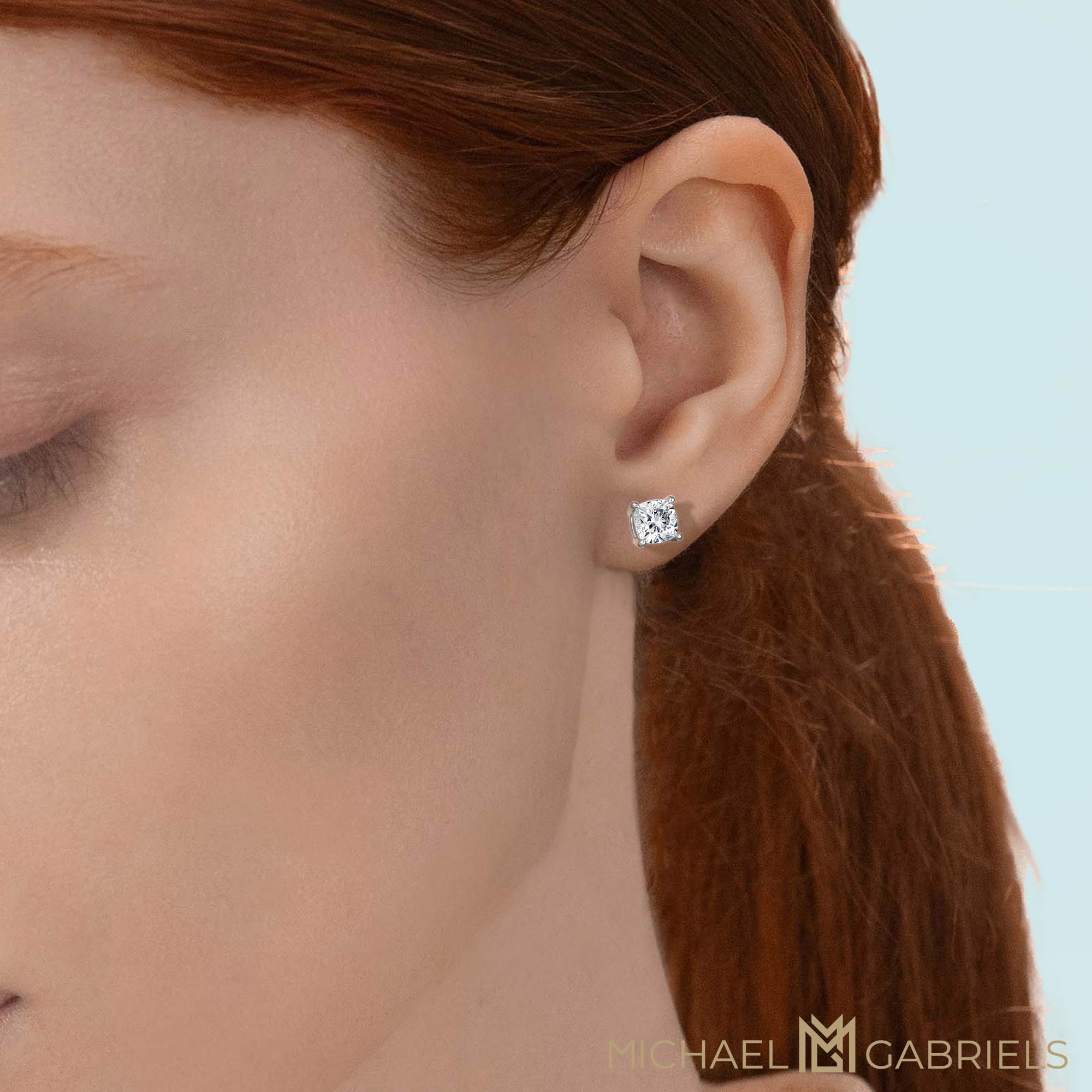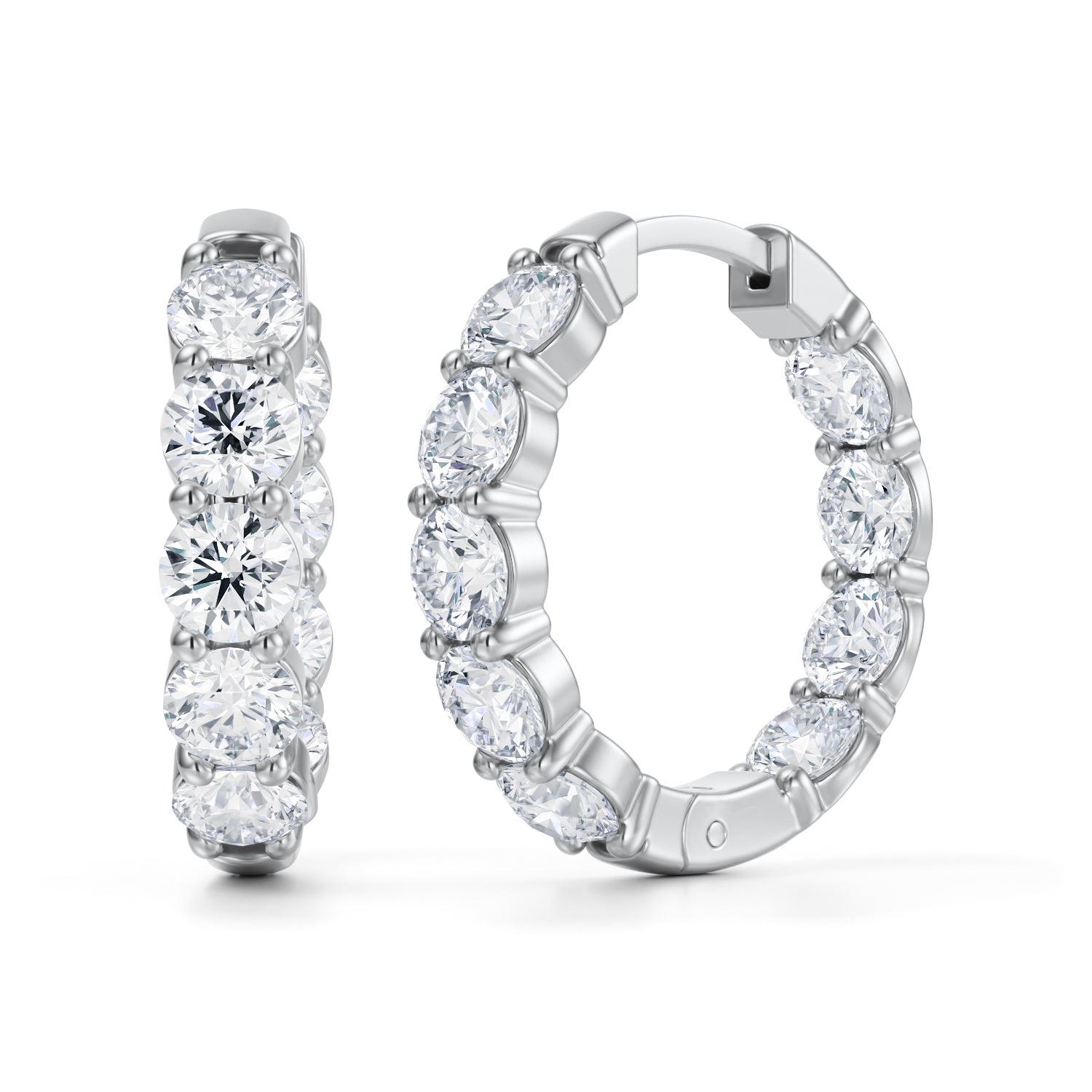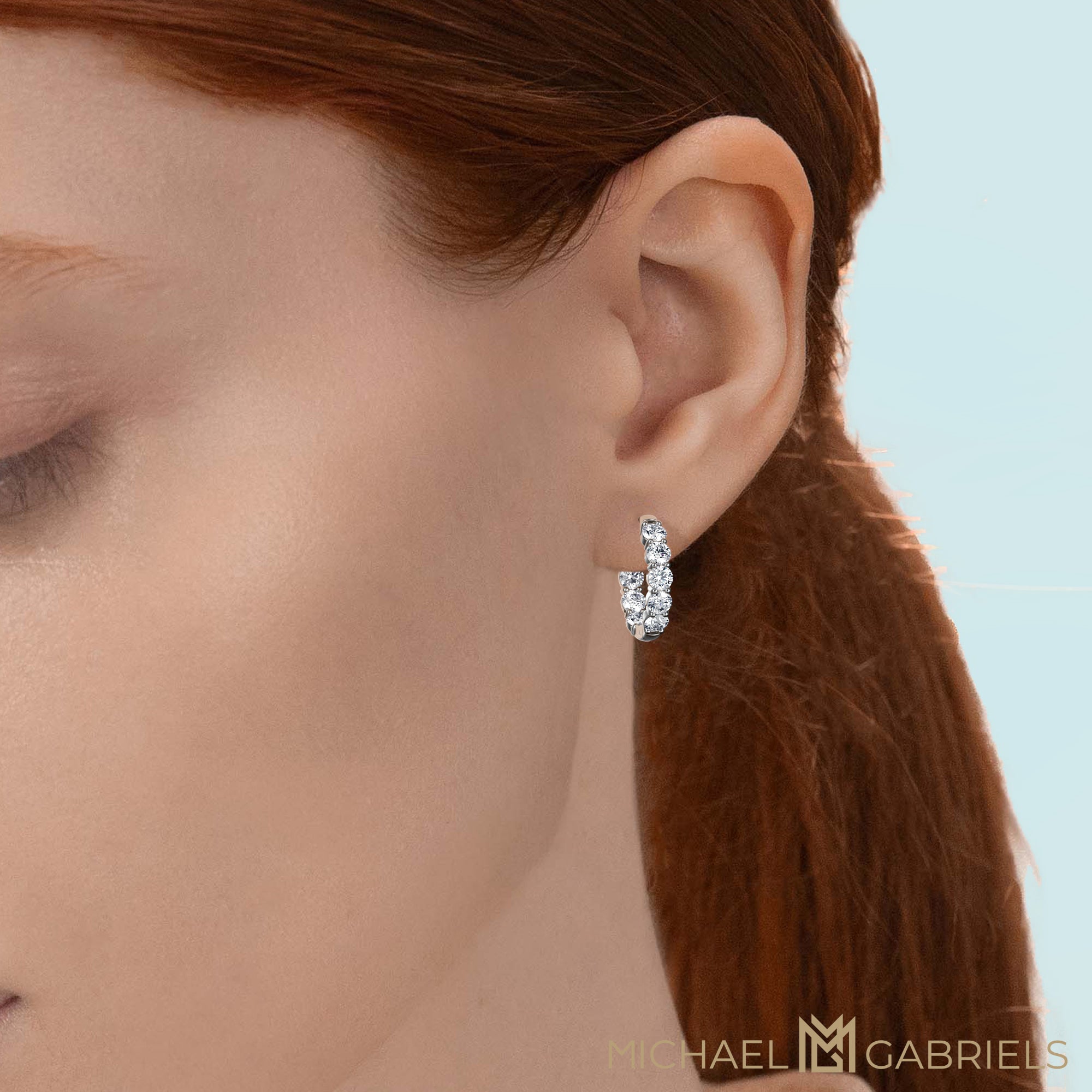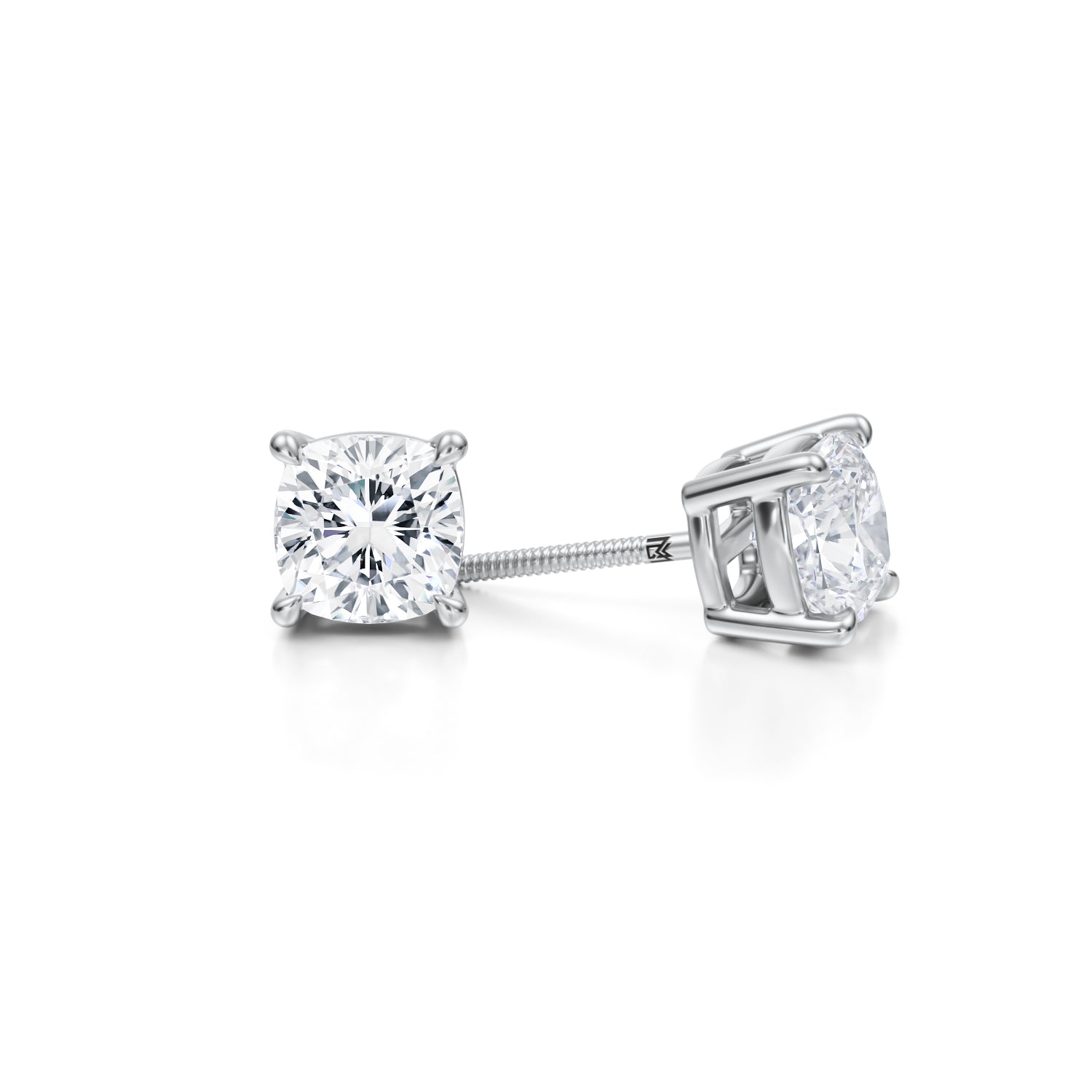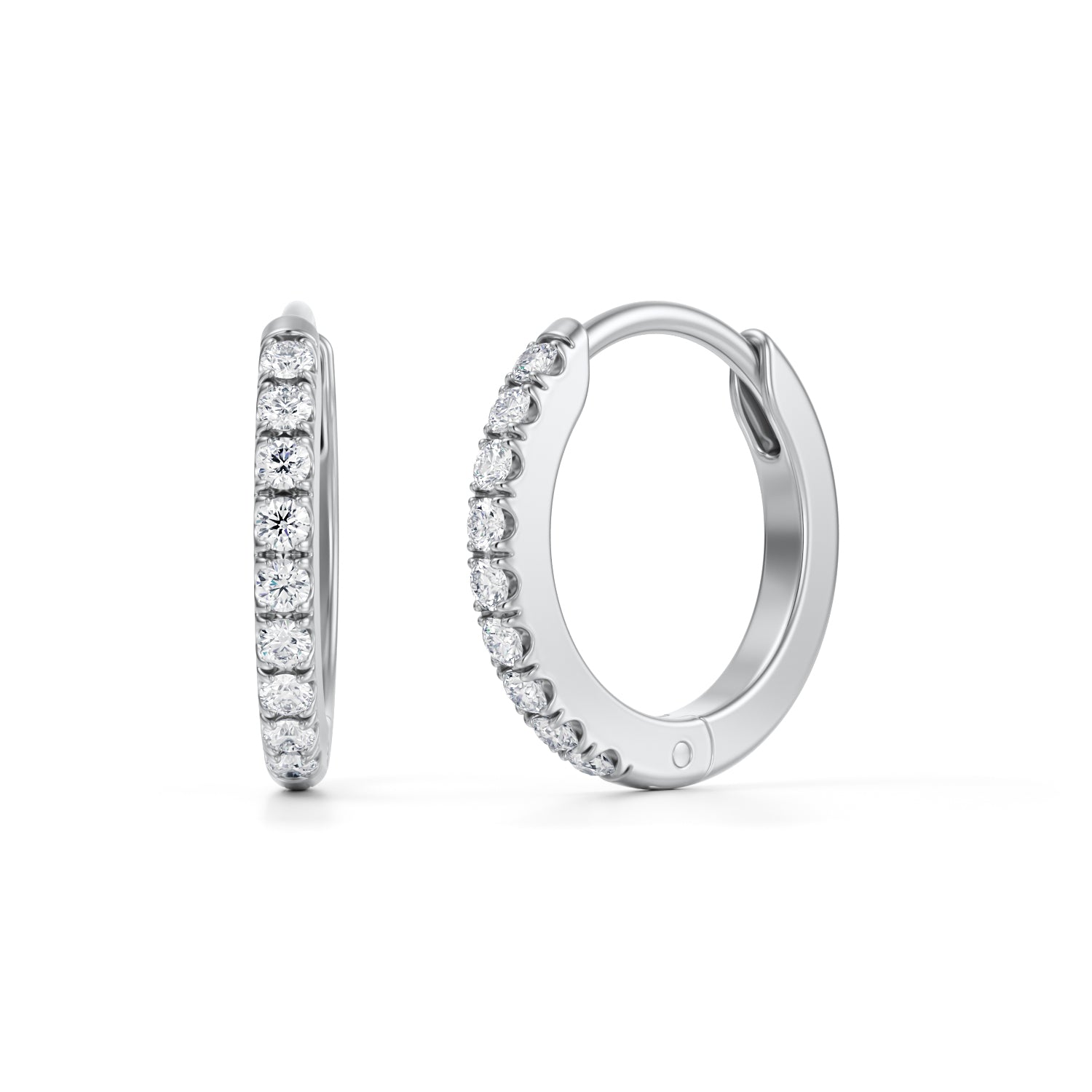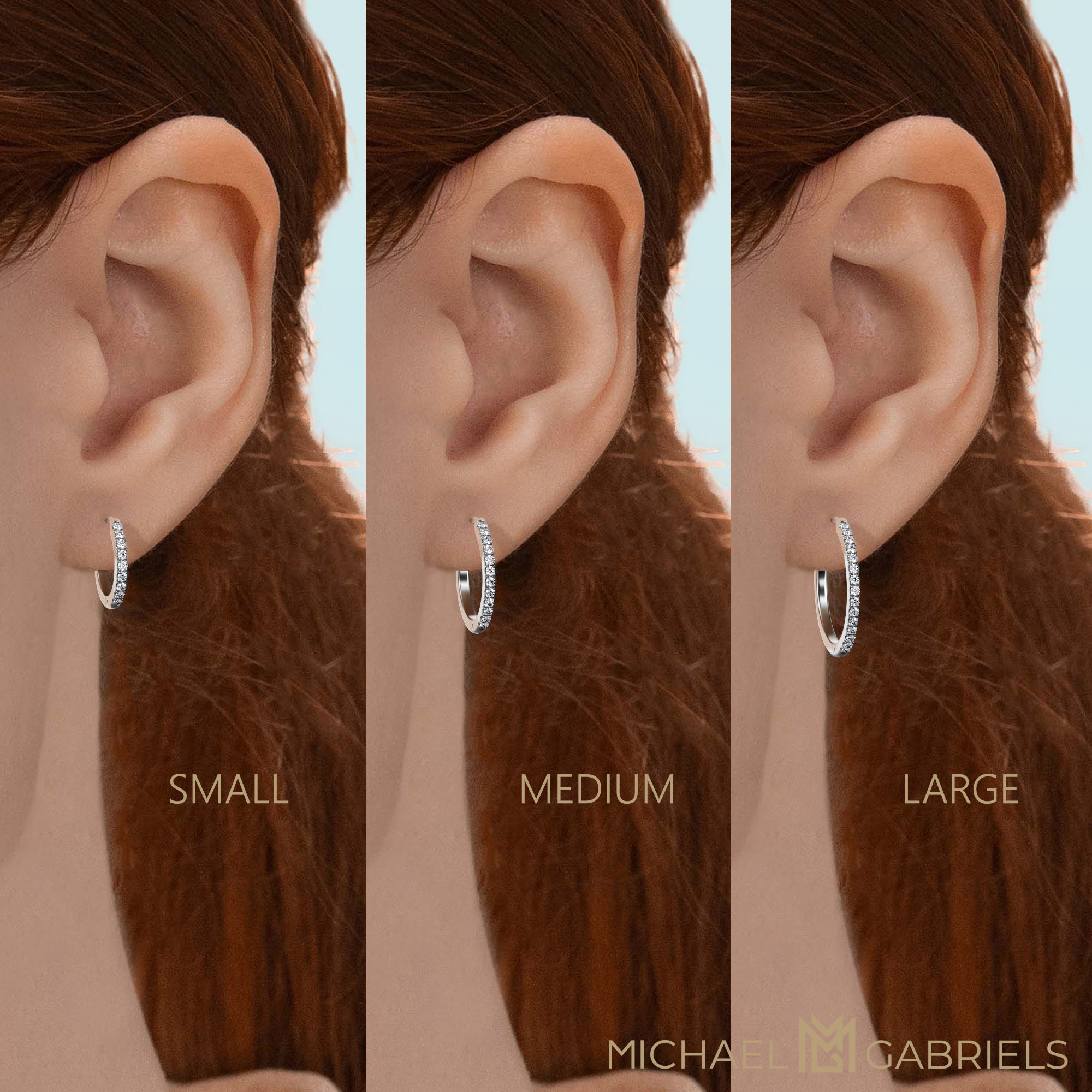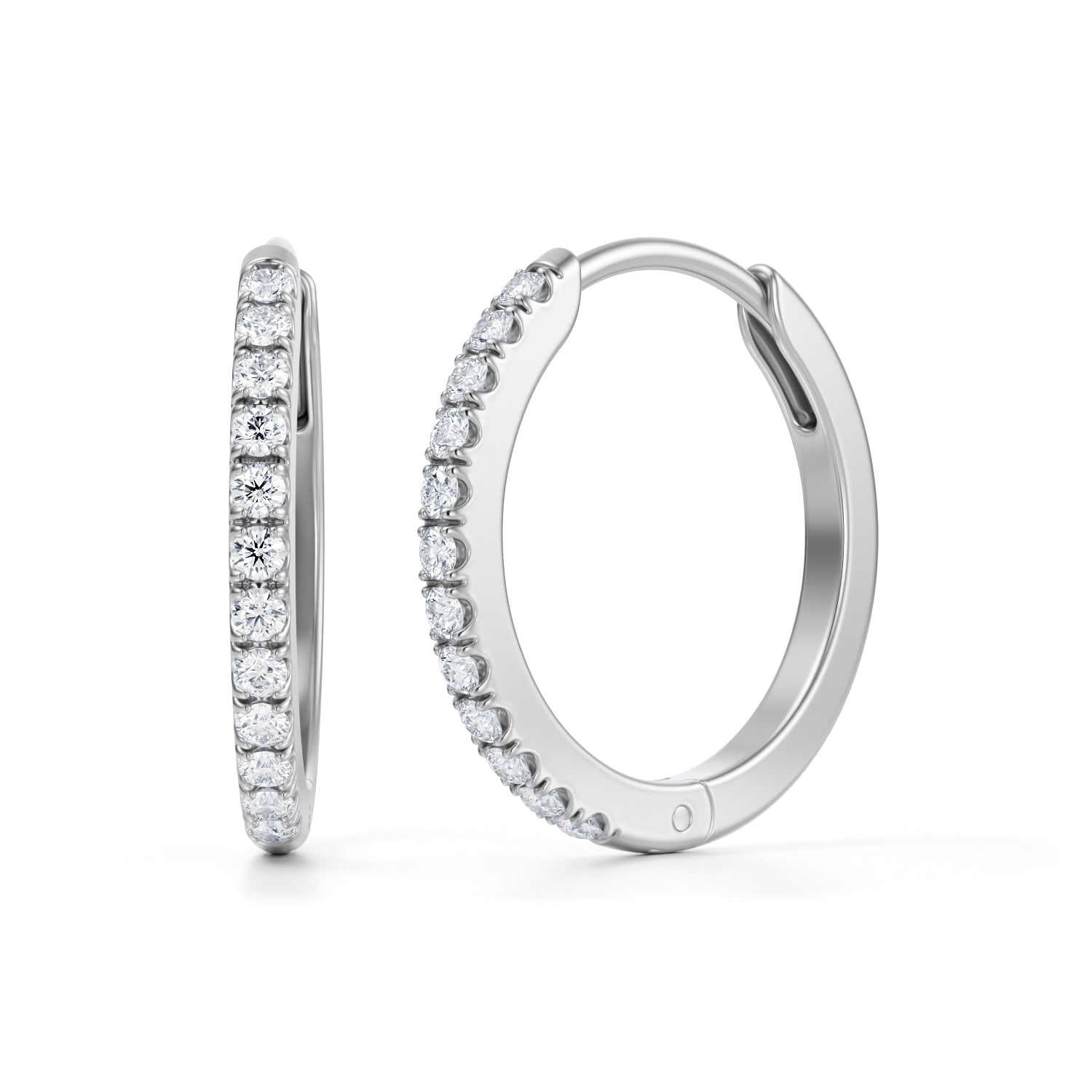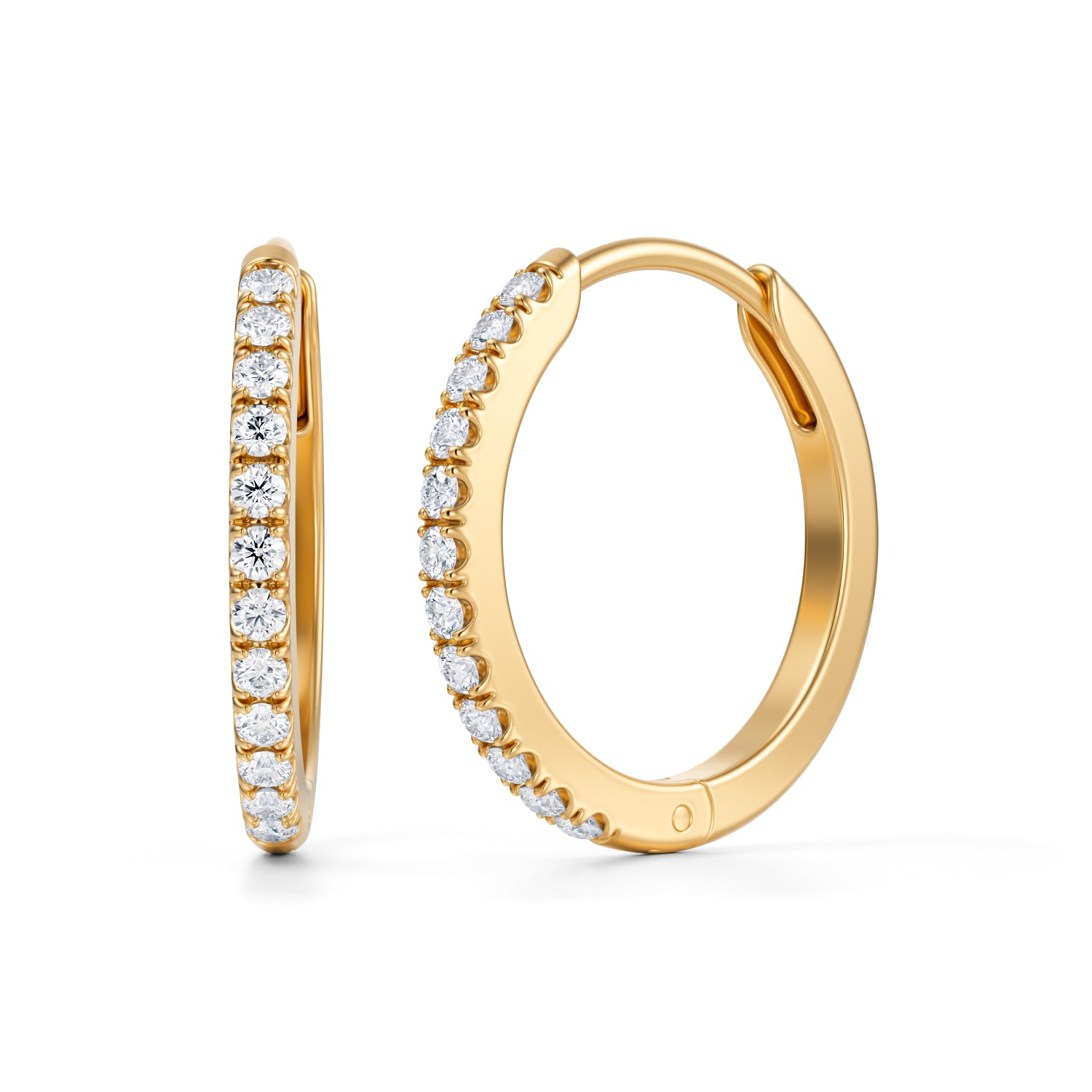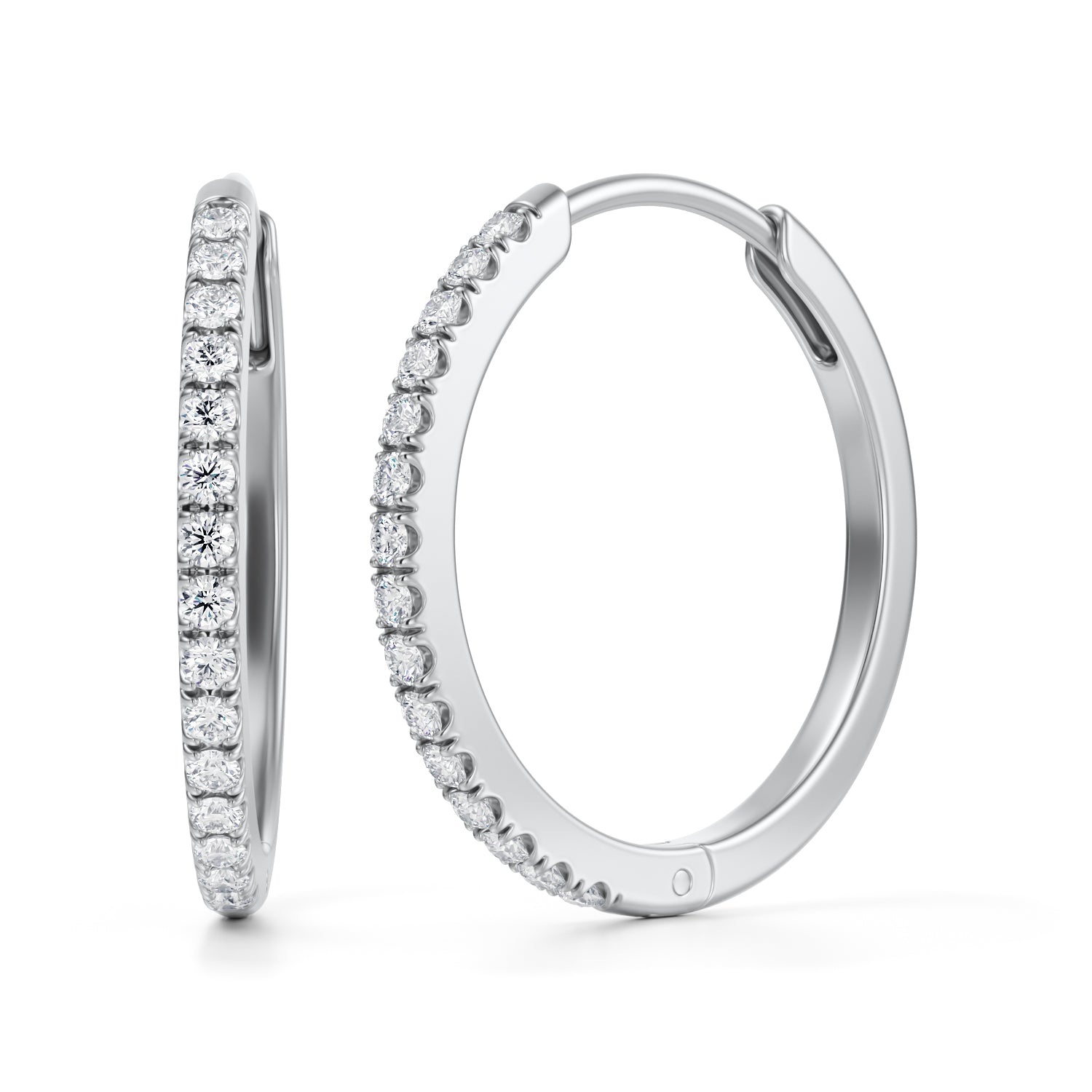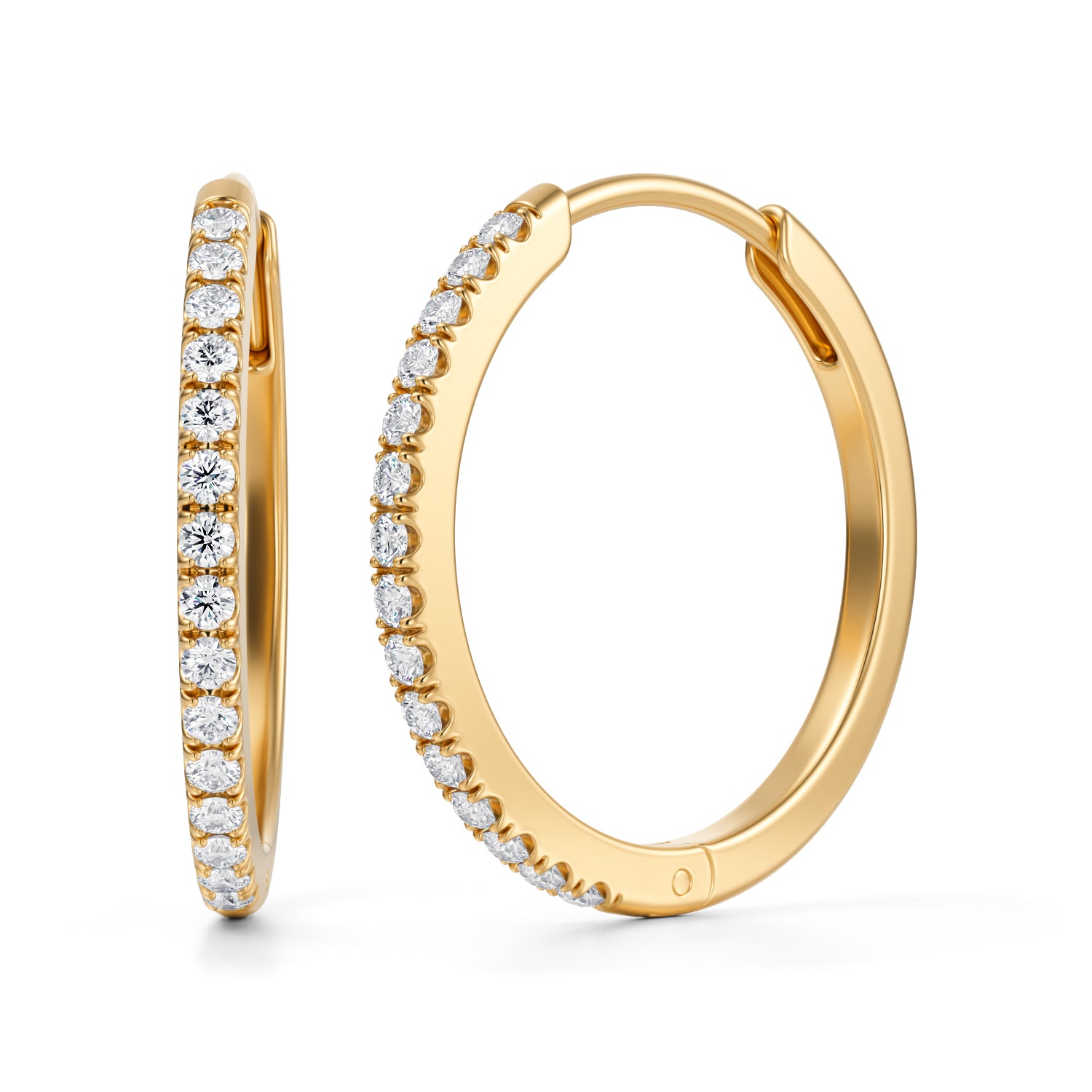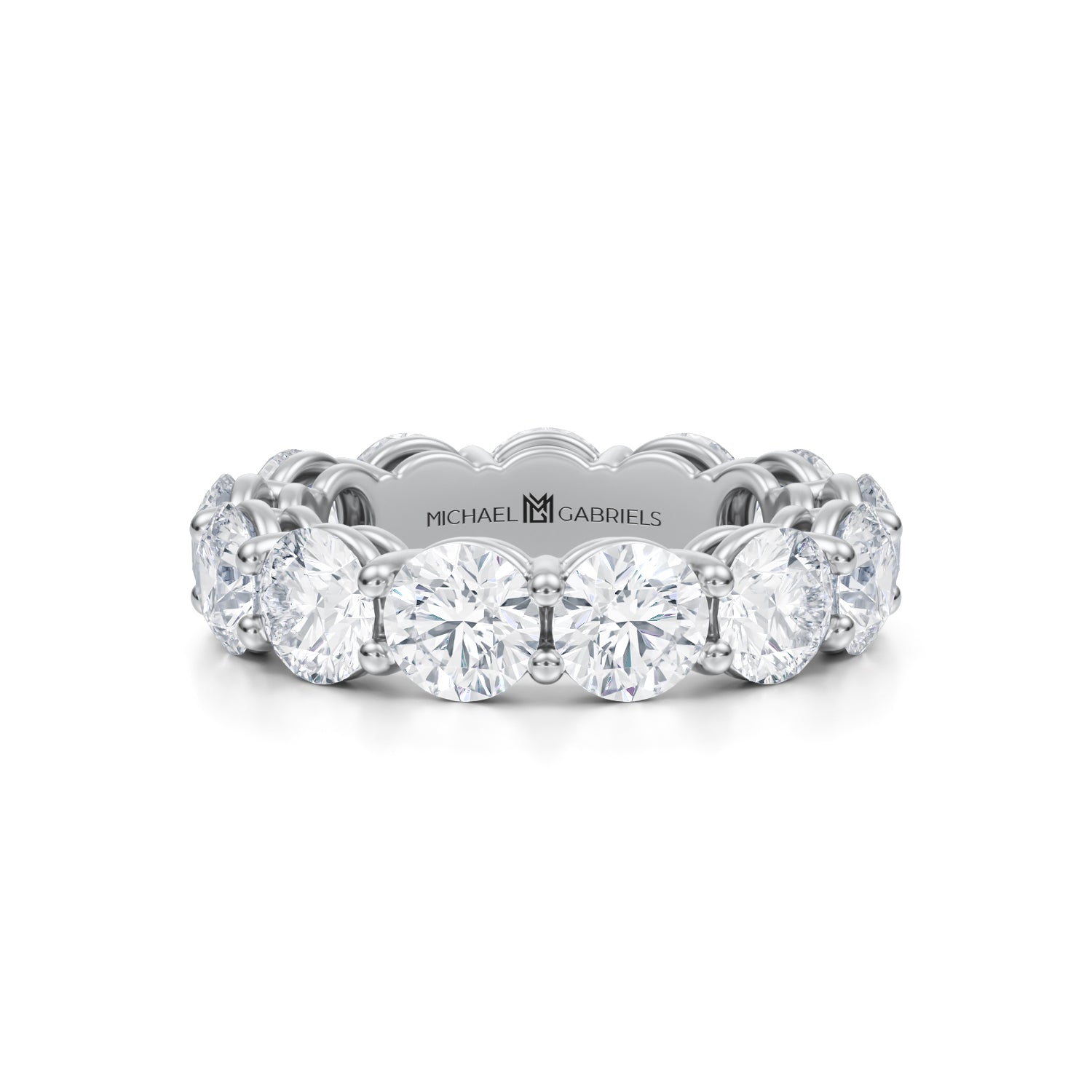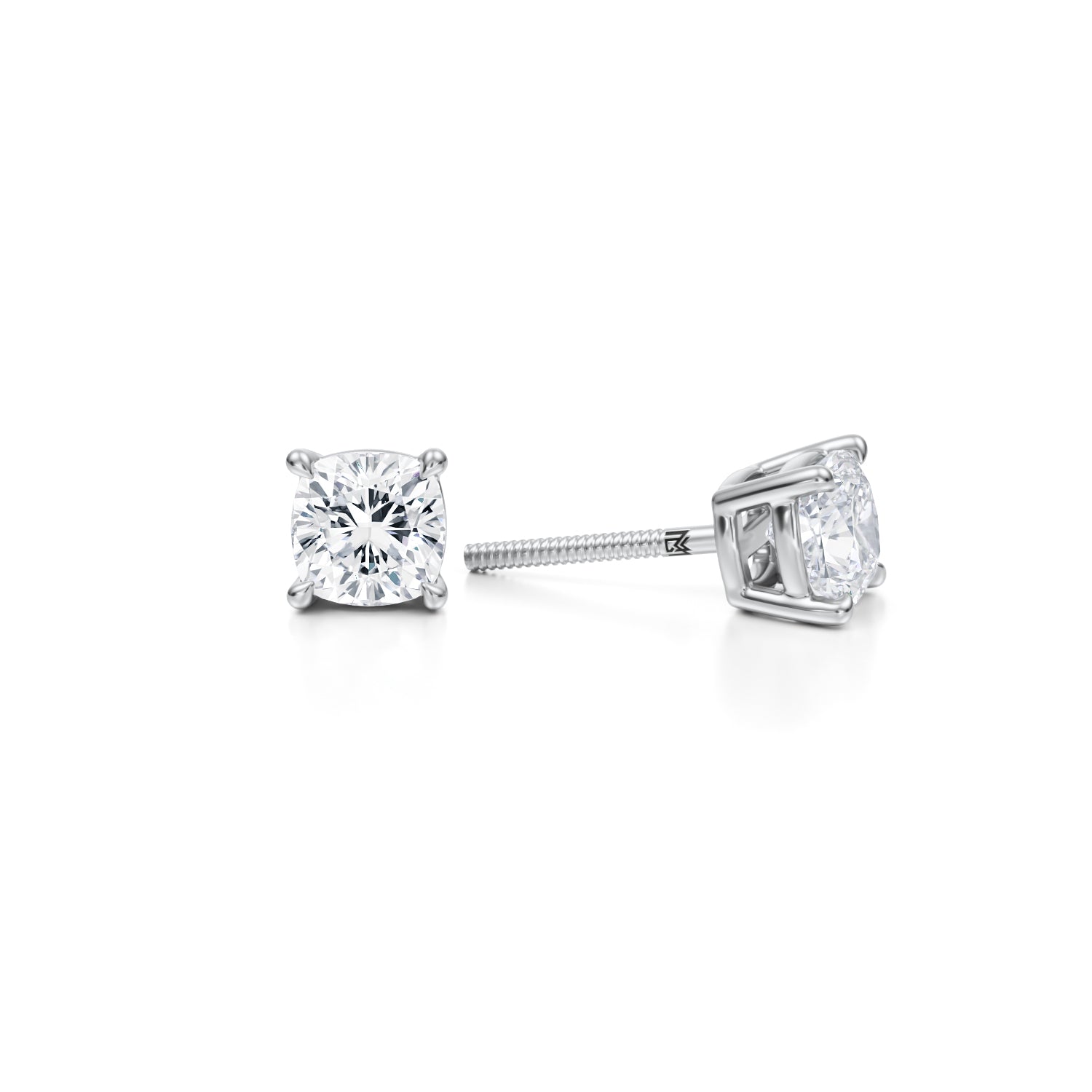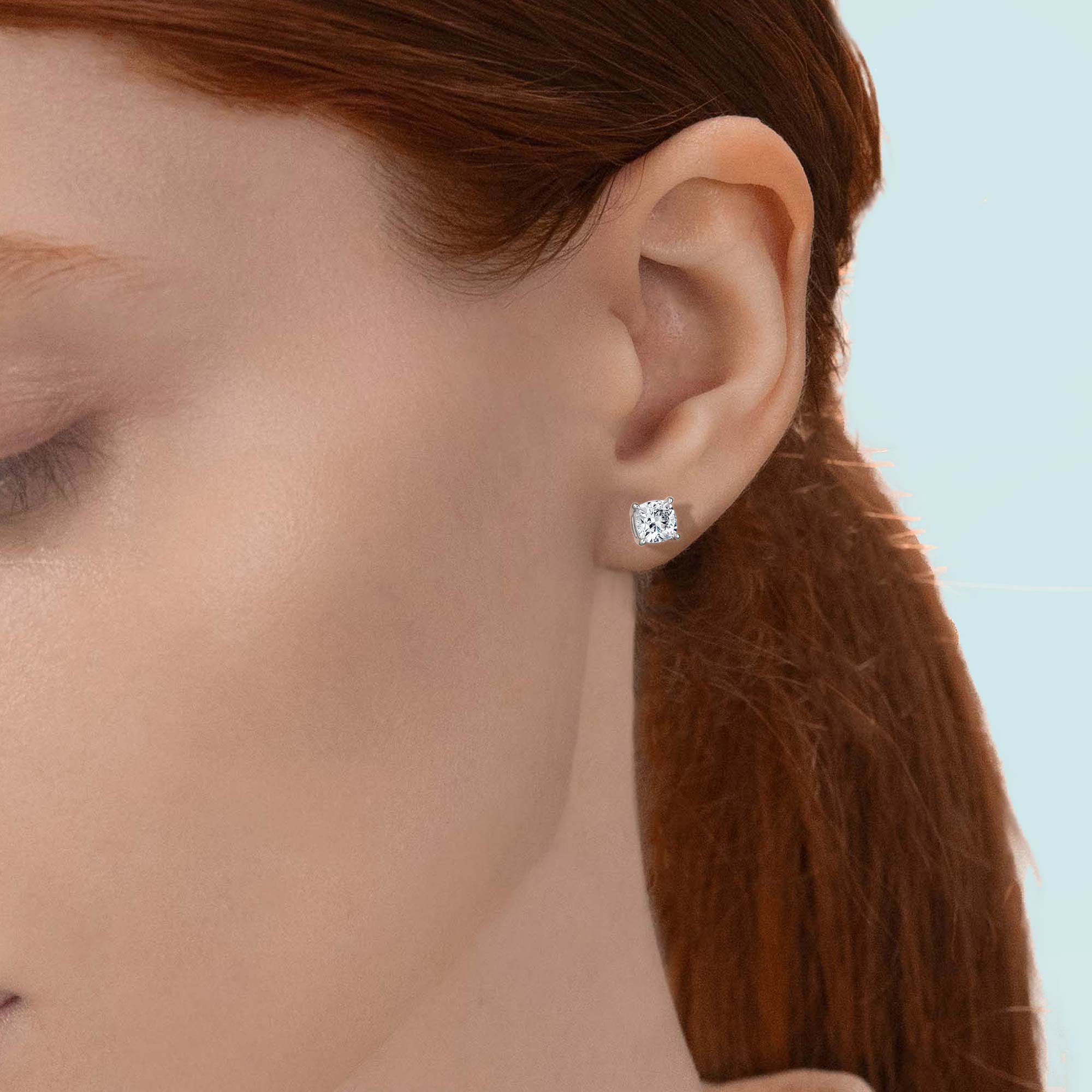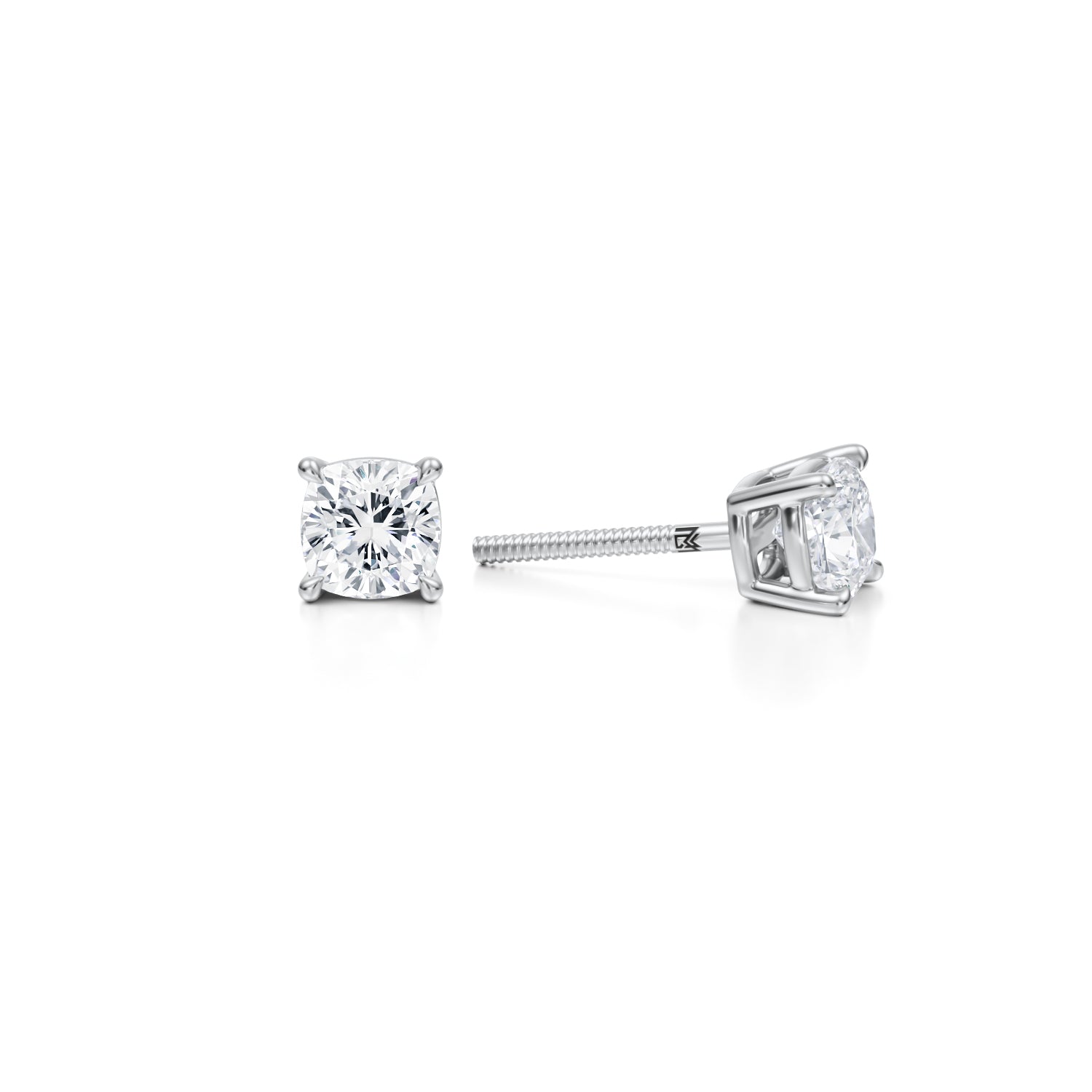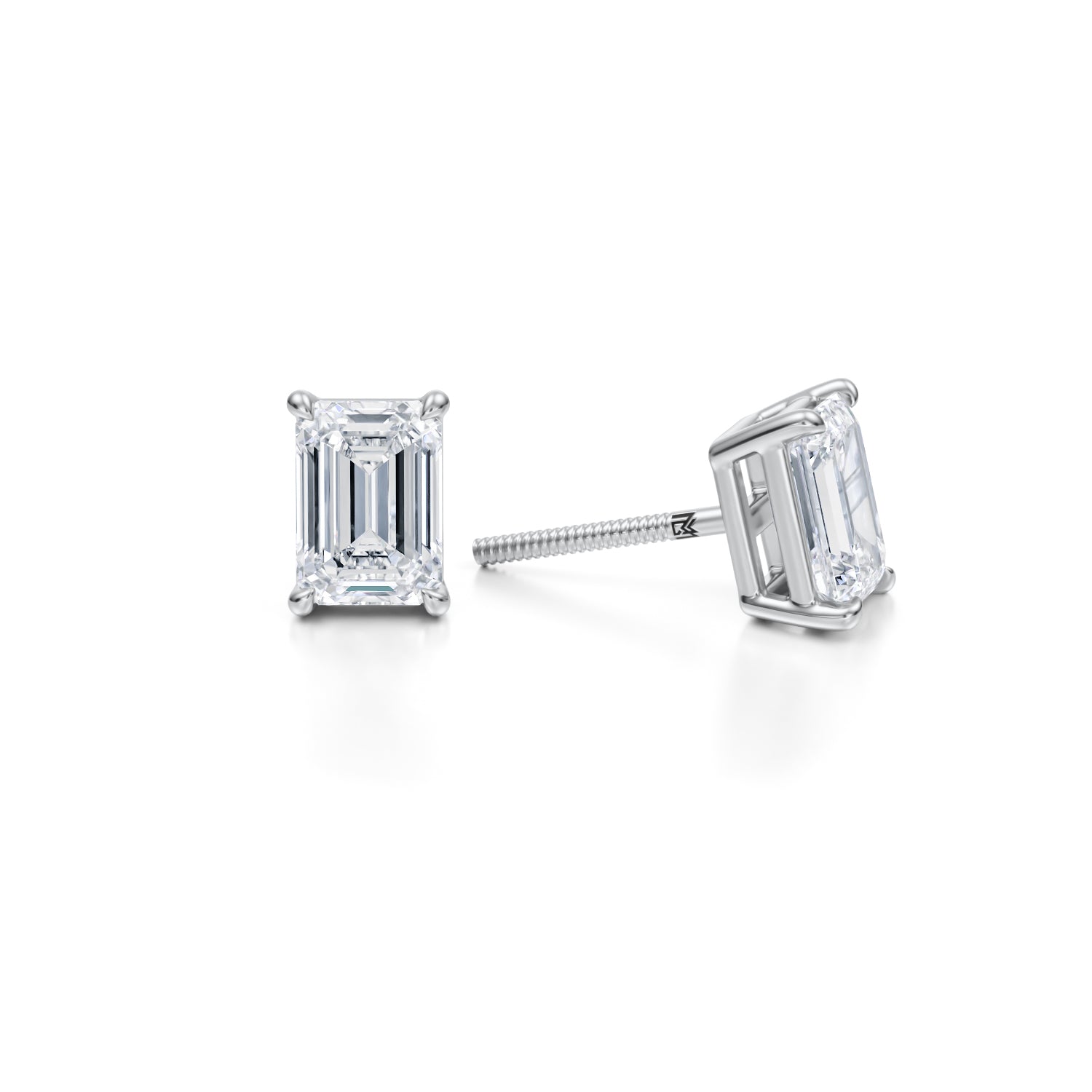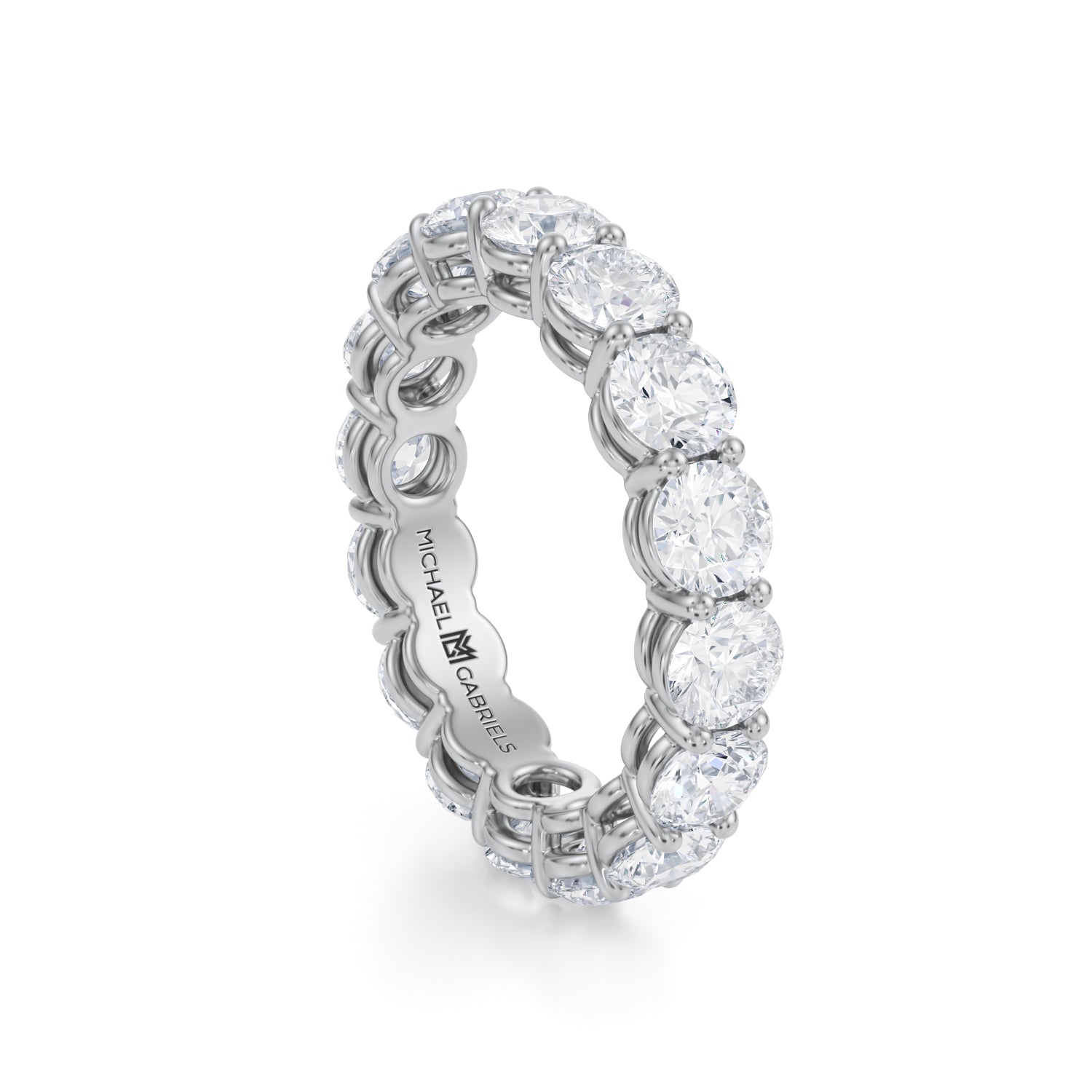Filters

Classic Emerald Solitaire Ring
Each Michael Gabriels engagement ring is a stunning creation, expertly crafted to showcase the unique brilliance and beauty of its diamond.
FIND MY PERFECT RINGNeed help?
Frequently Asked Questions
Definition & Identification
Lab grown diamonds are real diamonds created in laboratories using the
same carbon crystal structure as mined diamonds. They're chemically,
physically, and optically identical to natural diamonds but created in
weeks instead of billions of years.
No, they're visually identical. Even professional jewelers need
specialized equipment to tell the difference. Only microscopic laser
inscriptions identify lab grown diamonds.
Yes, lab grown diamonds are 100% real diamonds. The FTC officially
recognized them as genuine diamonds in 2018. They have the same hardness
(10 on Mohs scale), brilliance, and fire as mined diamonds.
Yes, lab grown diamonds are as durable as mined diamonds. They score 10
on the Mohs hardness scale and will maintain their brilliance for
generations without fading or clouding.
Advanced lab methods (spectroscopy, inclusions analysis, fluorescence patterns) can distinguish lab grown from natural; grading reports also indicate origin and may be paired with laser inscriptions on the girdle noting “laboratory‑grown".
Authenticity & Certification
Yes, each Michael Gabriels Lab Grown Diamonds includes independent appraisal
for diamonds 1 carat or larger, detailing the diamond’s cut, color, clarity, and carat weight, ensuring you know exactly what you’re getting.
Cut drives face‑up brilliance and should be prioritized, followed by color and clarity that match the metal and size, with carat weight chosen for presence and budget.
Yes, lab grown diamonds are conflict-free and environmentally friendly.
They require no mining, eliminating land disruption, water pollution,
and unethical labor concerns.
Michael Gabriels provides manufacturing warranties on lab grown diamond
jewelry. Most reputable retailers offer lifetime warranties covering
manufacturing defects but excluding normal wear and accidental damage.
Yes—GIA has graded laboratory‑grown diamonds since 2007 and issues Laboratory‑Grown Diamond Reports, while IGI also provides detailed reports including growth method and identifiers.
Economic & Value Considerations
Lab grown diamonds cost 60-85% less than identical mined diamonds. A
1-carat lab grown diamond might cost $1,400 while a similar mined
diamond costs $6,000.
Lab grown diamonds focus on beauty and personal enjoyment rather than
investment value. Their primary benefit is exceptional quality at
accessible prices, allowing larger or higher-grade stones within your
budget.
Care & Customization
Yes, lab grown diamonds can be resized, repaired, and modified exactly
like mined diamonds. Any experienced jeweler can work with them using
standard diamond techniques and tools.
Absolutely. Lab grown diamonds offer endless customization options
including different cuts, settings, metals, and engravings. You can
design unique pieces that reflect your personal style while staying
within budget.
Yes—lab grown diamonds are used across engagement rings and fine jewelry, and customization options for shape, size, metal, and setting are widely supported by jewelers.
Clean with warm water, mild soap, and a soft brush. Store pieces
separately to prevent scratching, and have them professionally inspected
annually. Lab grown diamonds require the same care as mined diamonds.
High‑quality lab diamonds do not inherently “cloud,” and perceived haze is usually tied to cut quality, fluorescence interactions, or post‑growth treatments rather than origin.
Sustainability and ethics
Lab grown diamonds avoid traditional mining and are widely marketed as conflict‑free with generally lower environmental impacts, though the true footprint varies by producer and energy mix.
Promotions and Rewards
We are currently developing a loyalty program to reward
our valued customers. Stay tuned for more details by subscribing to our
newsletter or following us on our social media channels.
Need More Help?
If you have any other questions or need further assistance, please feel free to contact our support team anytime. We're here to help!.
Tips to Enhance Your Experience:
1. Stay Informed: Subscribe to our newsletter for the latest updates and exclusive offers.
2. Follow Us: Connect with us on social media to see our newest collections and behind-the-scenes craftsmanship.
3. Customer Reviews: Check out what our satisfied customers are saying about their Michael Gabriels jewelry.


